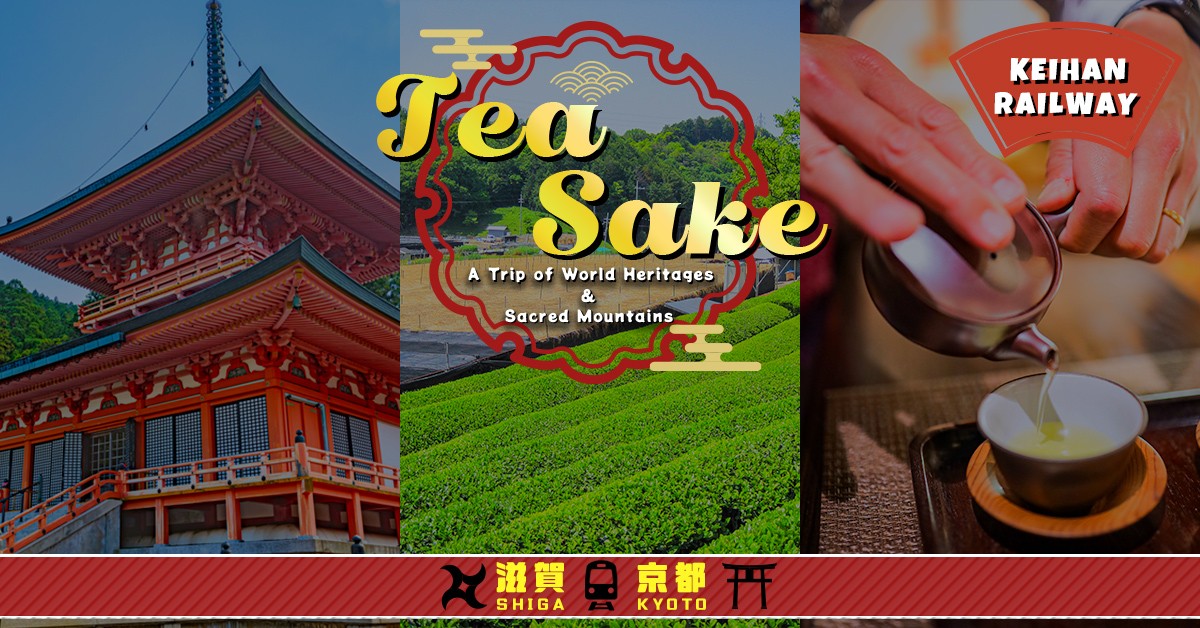
When traveling abroad, we think it’s okay to splash out a little, right?
In this article, we’re going to be starting in Uji, a town well known for its tea, and making our way to the World Heritage Site Enryakuji Temple on Mount Hiei, learning all about Japanese tea as well as the Keihan Railway.
Join us on a journey born from an interest in all things tea and learn about its origins.
※How about checking out this video which was shot on-site allowing you to feel like you’re really there while reading this article?
Eating My First Ever Tea Leaf in Uji, The Home of Japanese Tea
When heading to Uji, the first thing my friend told me about was a brand new park that opened in October 2021, Historical Park of Tea and Uji Town.
You can reach Tofukuji Station, 1 station after Kyoto Station, using the Keihan Railway from which you can then reach Uji in around 30 minutes. The park itself can actually be seen from the station! As members of the FUN! JAPAN Editorial Team, there was no way we could give up the chance to check out a brand new location that had just opened! And so, this was the first location we visited during my journey.
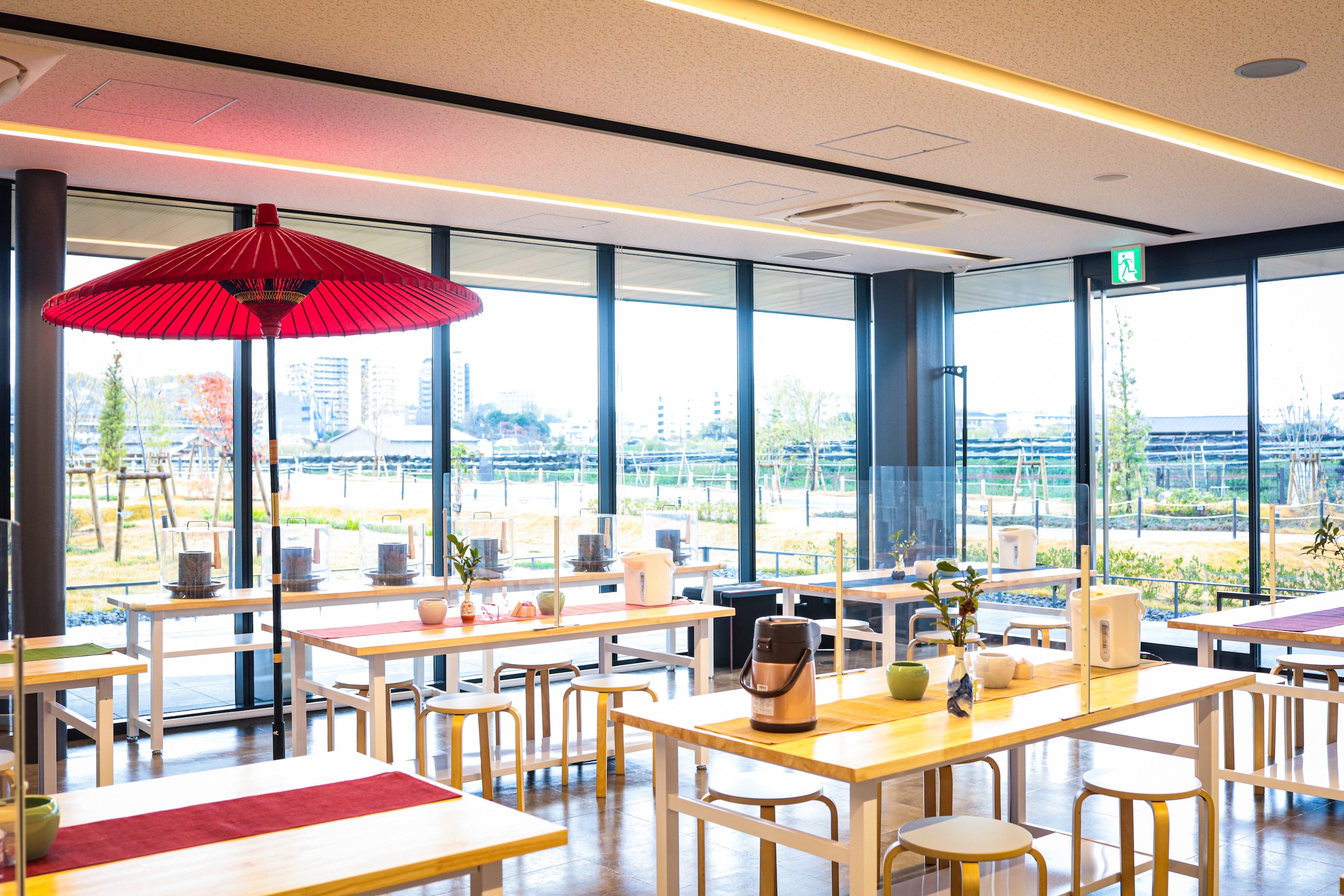
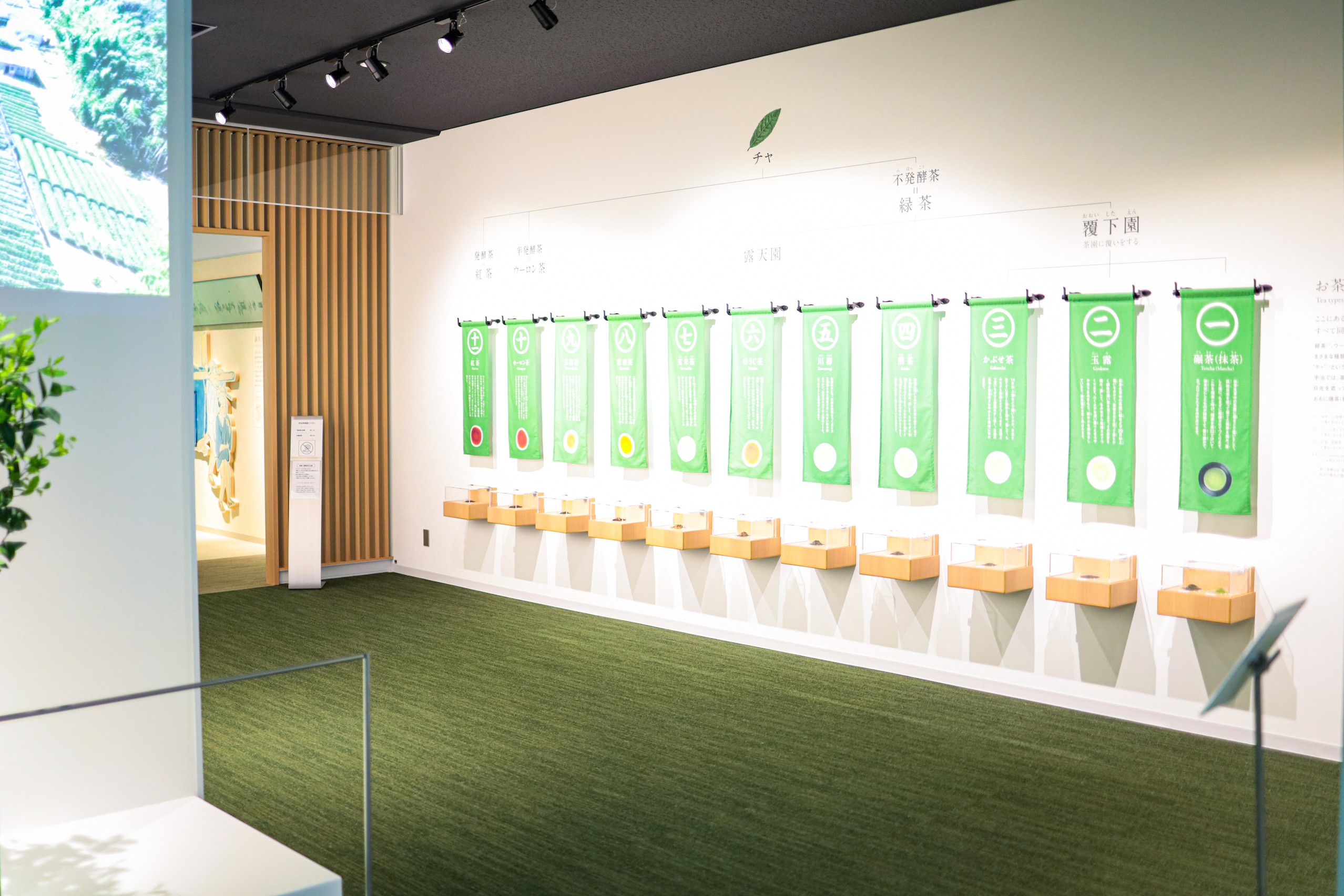
Through the use of exhibitions, historic remains, and activity programs, you’re able to learn all about the 400 years of history behind the high-quality tea brand Uji-cha as well as the history, culture, and sightseeing spots within the town where it has been cultivated since its birth.
Alongside the museum, there are also other facilities here including the exchange hall “Chazuna” within which you can try out making your very own tea canister and tea sweets with a total of 20 daily unique activities and experiences to enjoy (You’re able to try out multiple activities if you so wish). The activity we took part in during this report is learning the correct way to prepare refined green tea, or “Gyokuro” in Japanese.

Gyokuro is one of the highest quality green teas you will find. The activity we took part in included using “Kyō ware”, a type of pottery that’s used to serve this type of green tea.
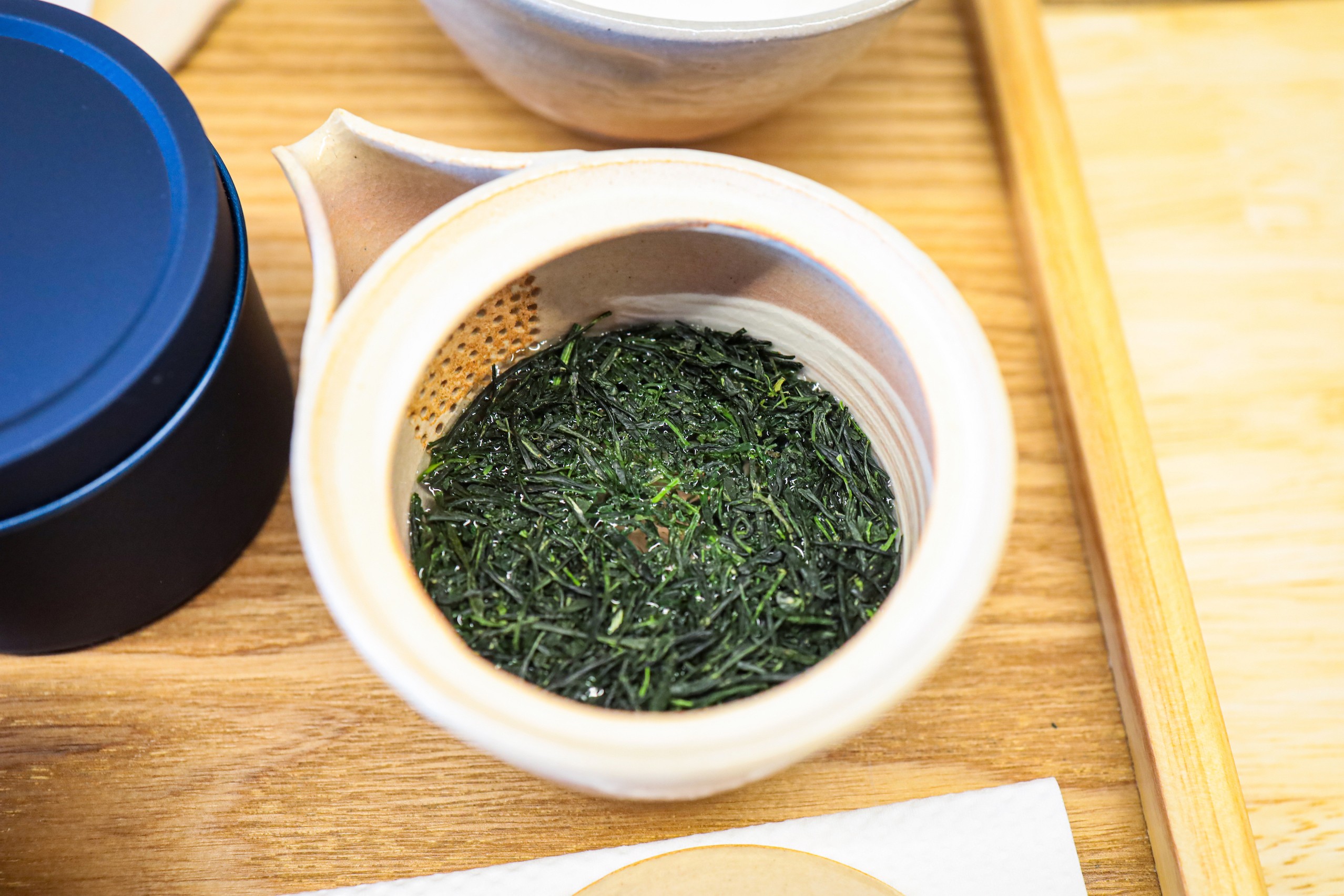
We start by making the first infusion of tea. We had to place the tea leaves into a small teapot, and then fill the pot with water at around 40 degrees celcius before letting the tea leaves soak for 3 minutes.
The teacher gave us advice to ensure that the ingredients don’t dissolve before we begin the second infusion and that all drops of tea from this infusion must be obtained, with the final drops said to be the most delicious.
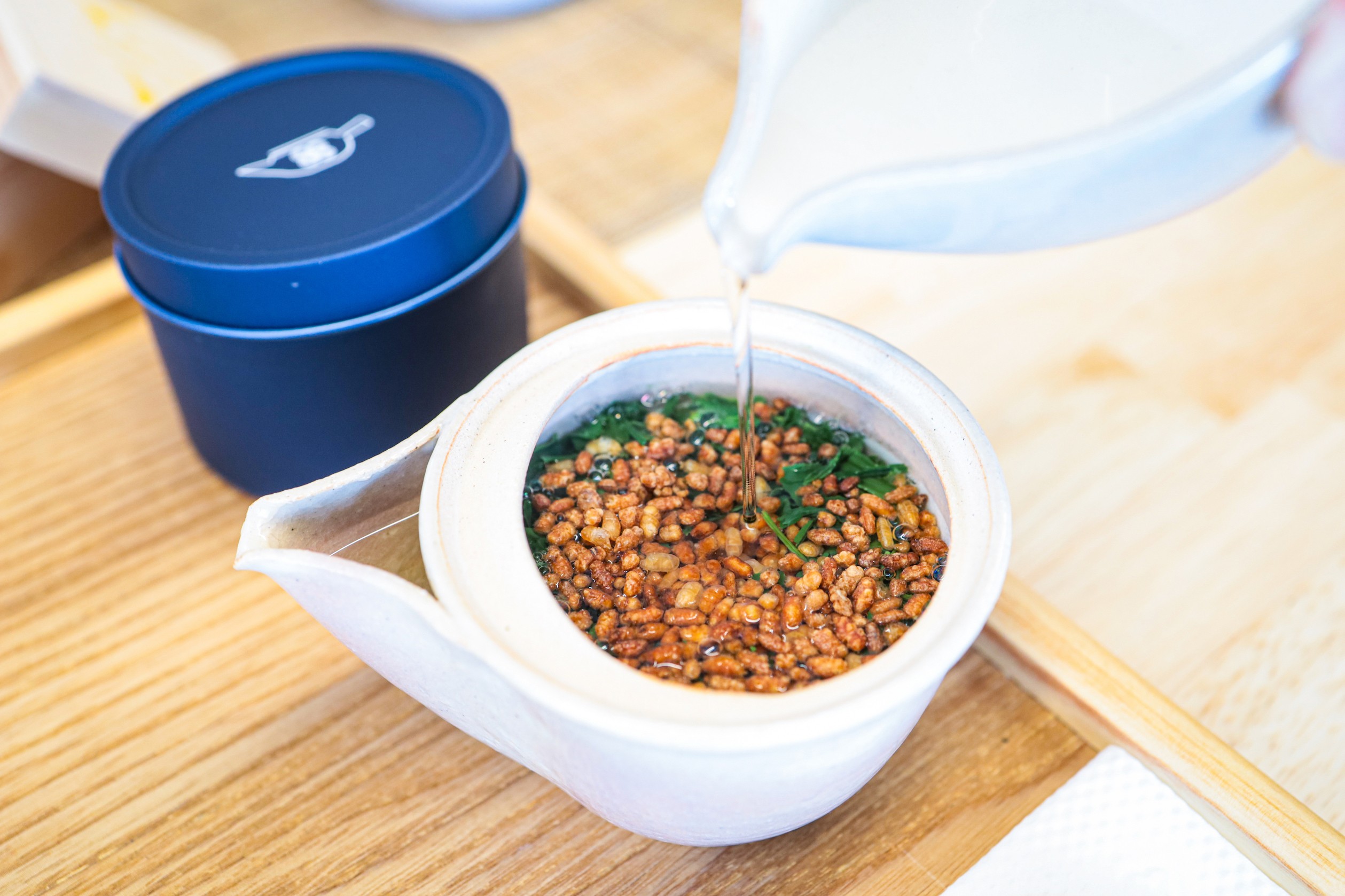
From the 2nd infusion we slowly add hot water and adjust the overall temperature of the tea. Both the flavor and look of the tea will change as this process occurs, which made it quite fun to check and compare each other's tea as we continued. But, we’re sure we all know tea we’ve made ourselves will always be the most delicious! (Is what we like to tell ourselves anyway…)
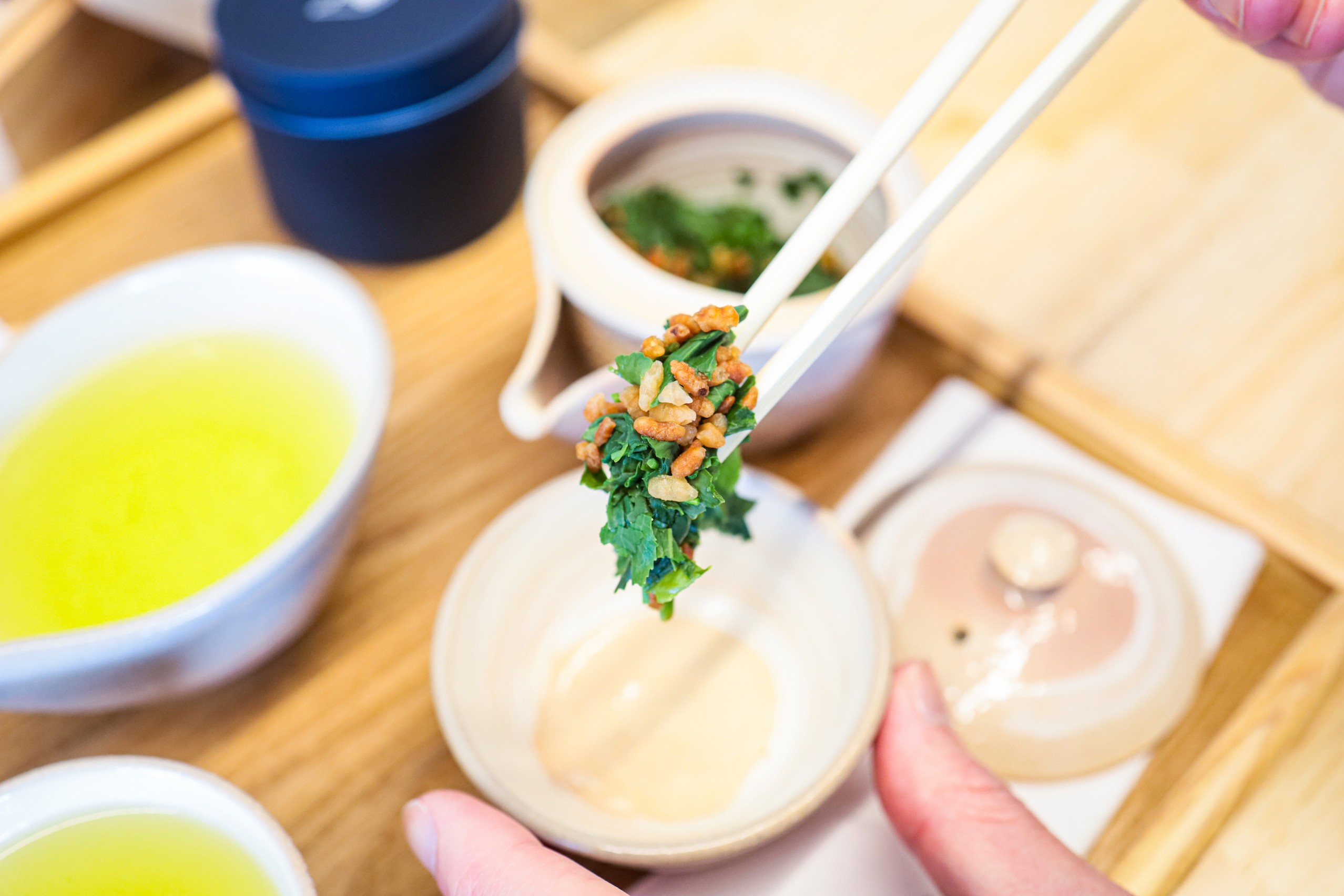
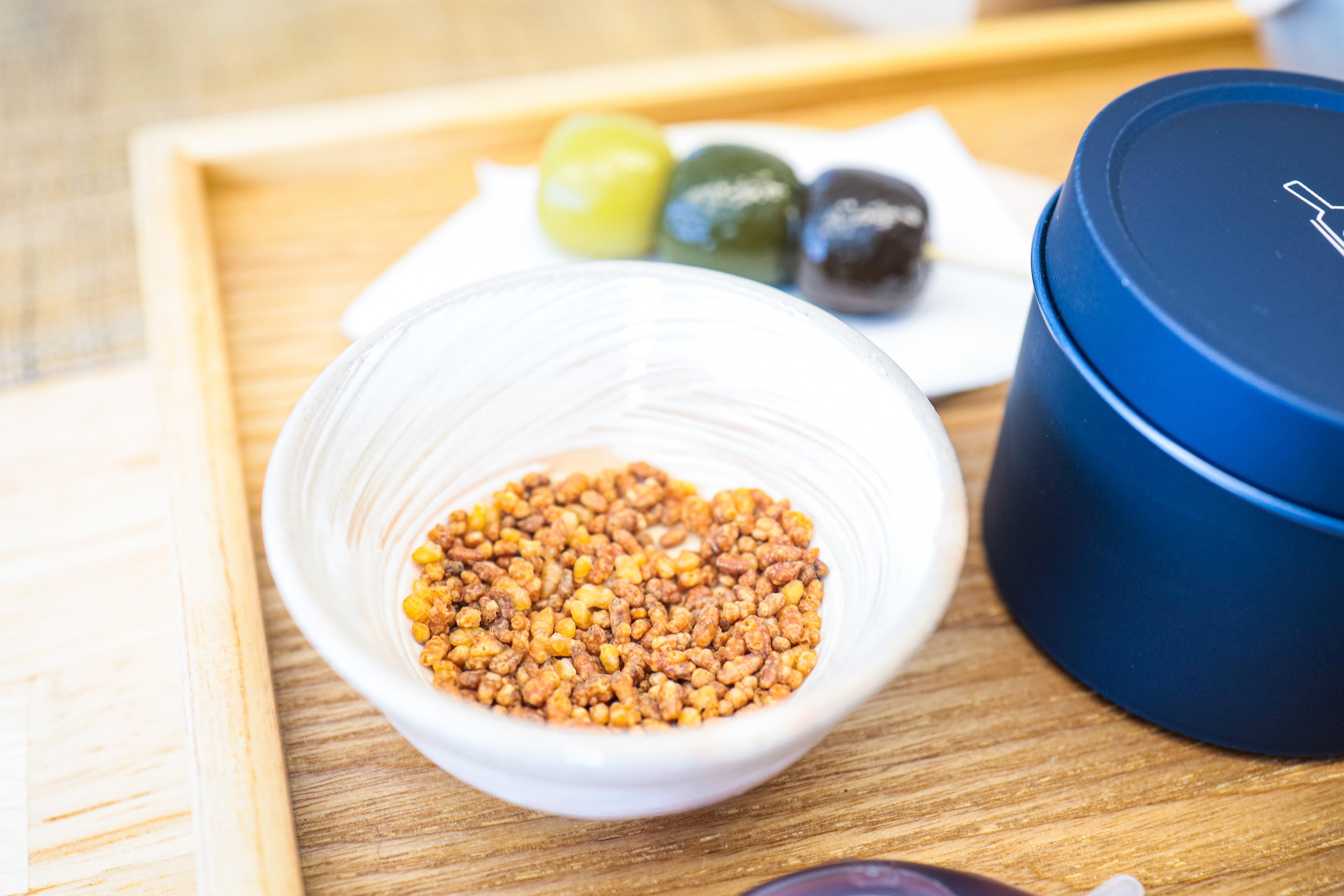
For the 4th infusion of tea we placed some brown rice in the pot alongside the tea leaves to create and enjoy a delicious cup of Genmaicha (Tea with roasted rice), eventually eating the brown rice and tea leaves alongside some gomasio (roasted sesame seed and salt mixture) and ponzu (Japanese sauce made primarily of soy sauce and citrus juice).
The taste was quite similar to spinach! In the background you can see some Uji-cha dango sweets which we were given during our stay. From the lighter color on the left, the flavors were different types of tea, the first being a middle grade of green tea, the second being matcha (powdered green tea) and the final, Hōjicha (roasted green tea).
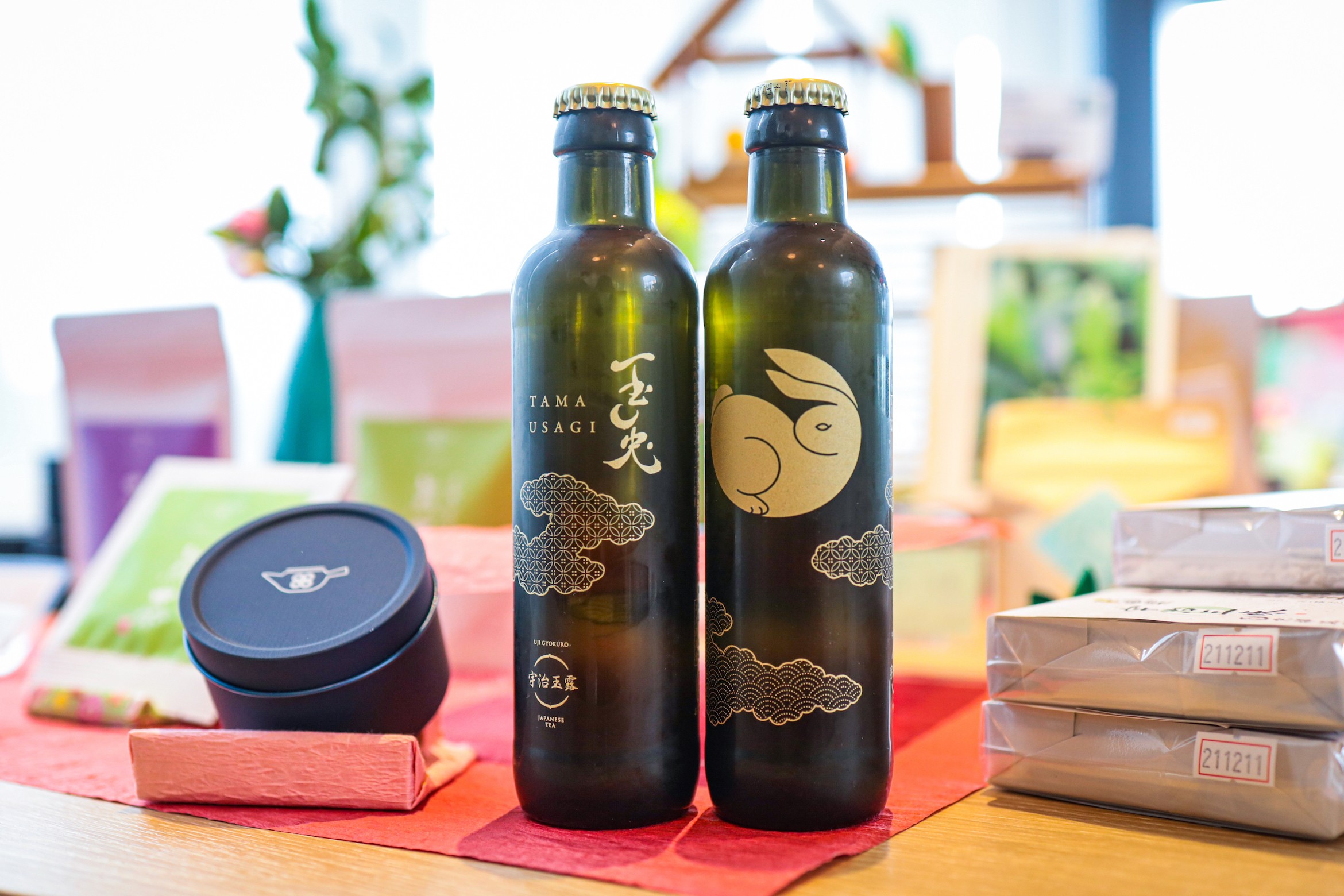
This drink has been created over the course of 3 years and comes in a spectacular vase. Locally, it’s said to often be used for special occasions when making toasts!
Historical Park of Tea and Uji Town
Address:Maruyama-203-1 Todo, Uji, Kyoto
- Business Hours:09:00〜17:00
- Holidays:N/A(Certain activities may be suspended or shortened depending on weather conditions)
- Access:A 4-minute walk from Keihan Uji Station
3 Impactful Flavors of Edible Tea!
Chazuna was not the only location during our journey that gave us the realization that tea was not just something to drink, but also something to eat.
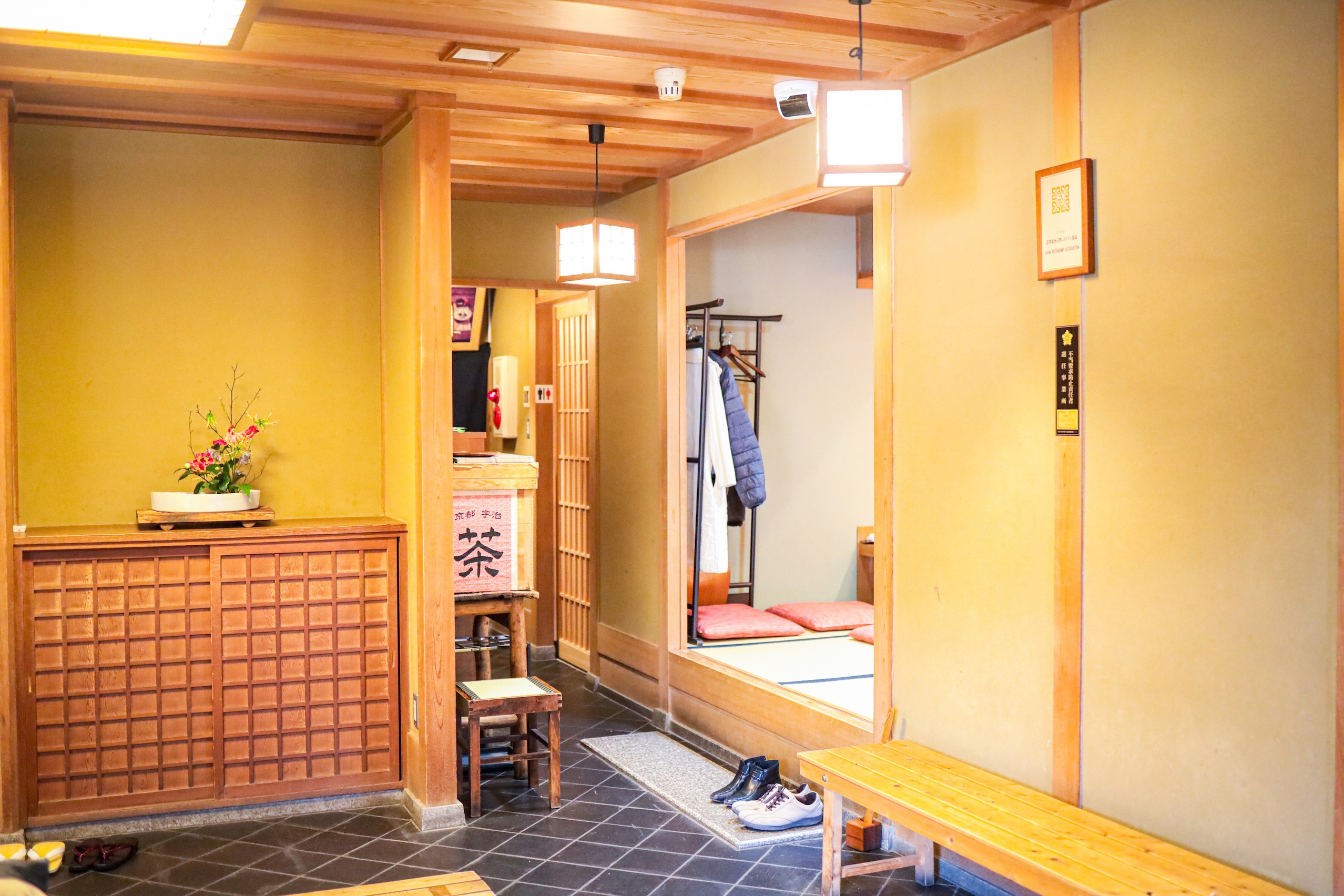
If you take a quick 15-minute walk from Historical Park of Tea and Uji Town, you’ll find Tatsumiya just next to the Uji River, a place where green tea lovers from across the world can live their wildest dreams in a full course setting. The location itself is said to have been around since as far back as the year 1840!
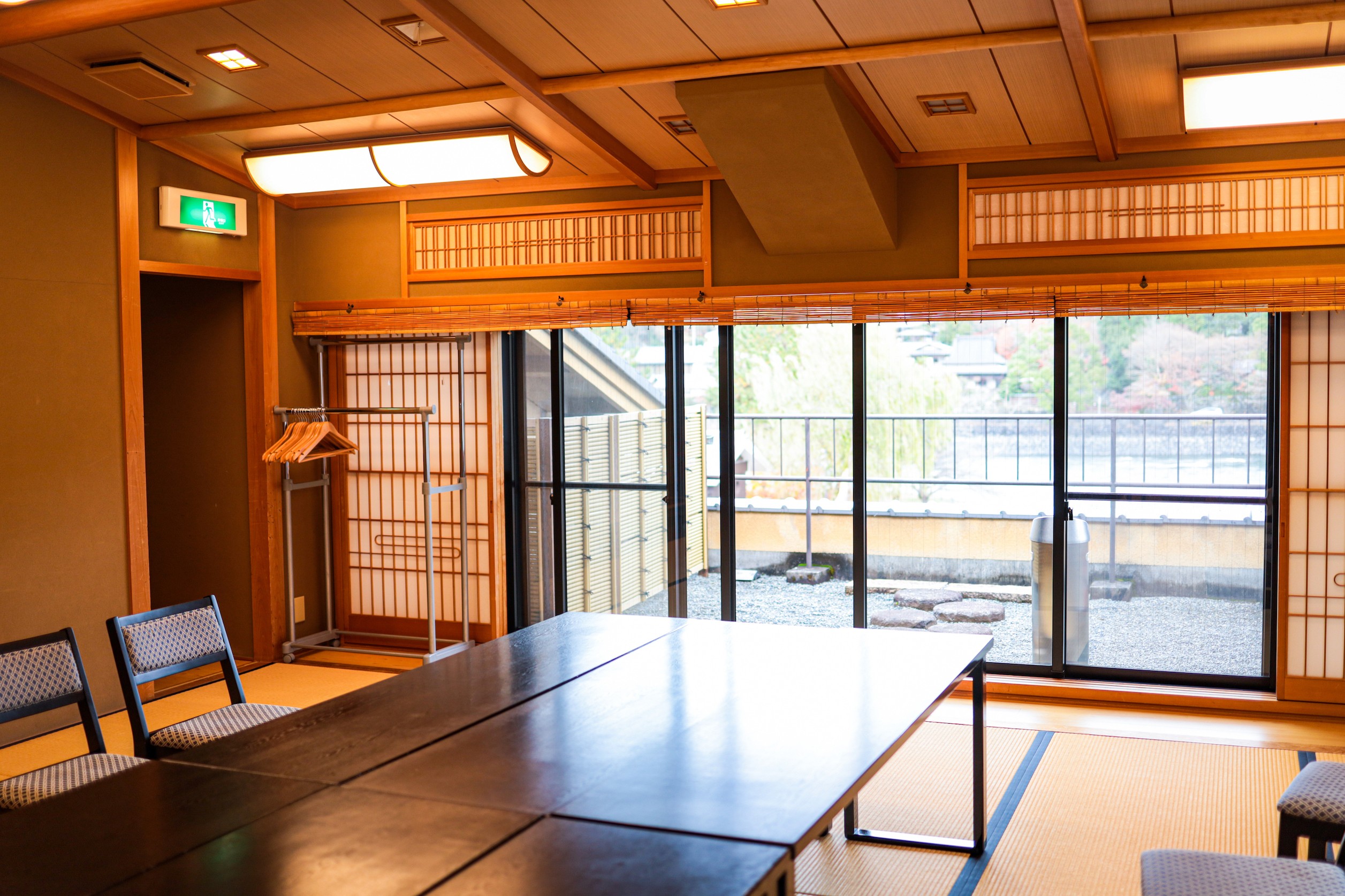
Born from the concept of “Tea you can eat”, the artisans here pay close attention to detail when it comes to using local ingredients for both production and consumption, allowing visitors to eat a wide array of seasonal green tea dishes. After excitedly making our choices and ordering our food, we were brought items such as salts, desserts, tofu, and even soba all made using powdered green tea. However, even though you might think the green tea would be overpowering, the dishes themselves were extremely light with only a faint scent of green tea. After experiencing this, I was almost ready to pack my things and move so I could visit every day.
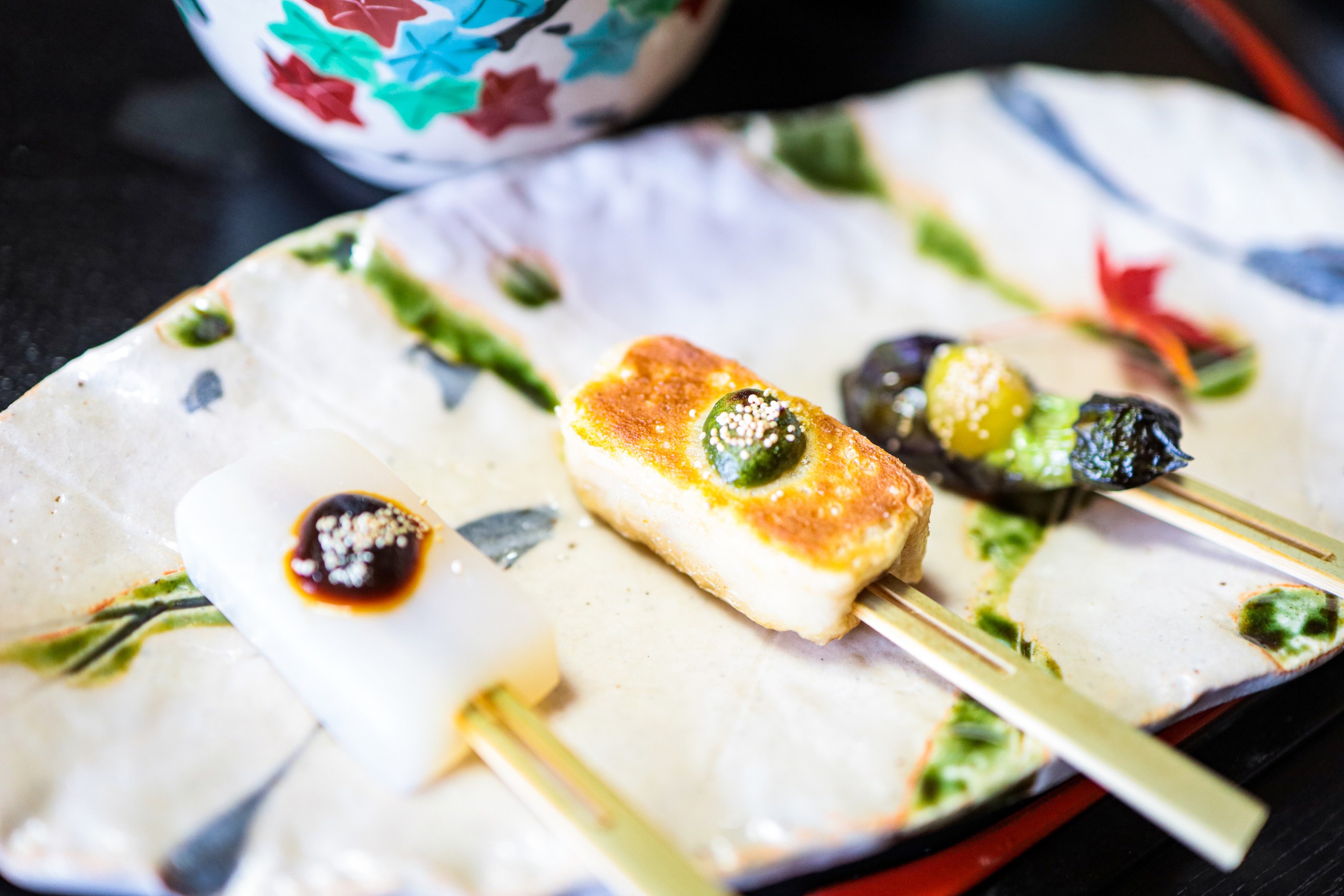

This full course meal uses a luxurious 7 coatings of powdered green tea! They’ve been made in such a way that while all the items contain and make use of matcha, you’re sure to not be bored trying each and every unique flavor within this lunchtime-limited course. Don’t forget to make reservations in advance!
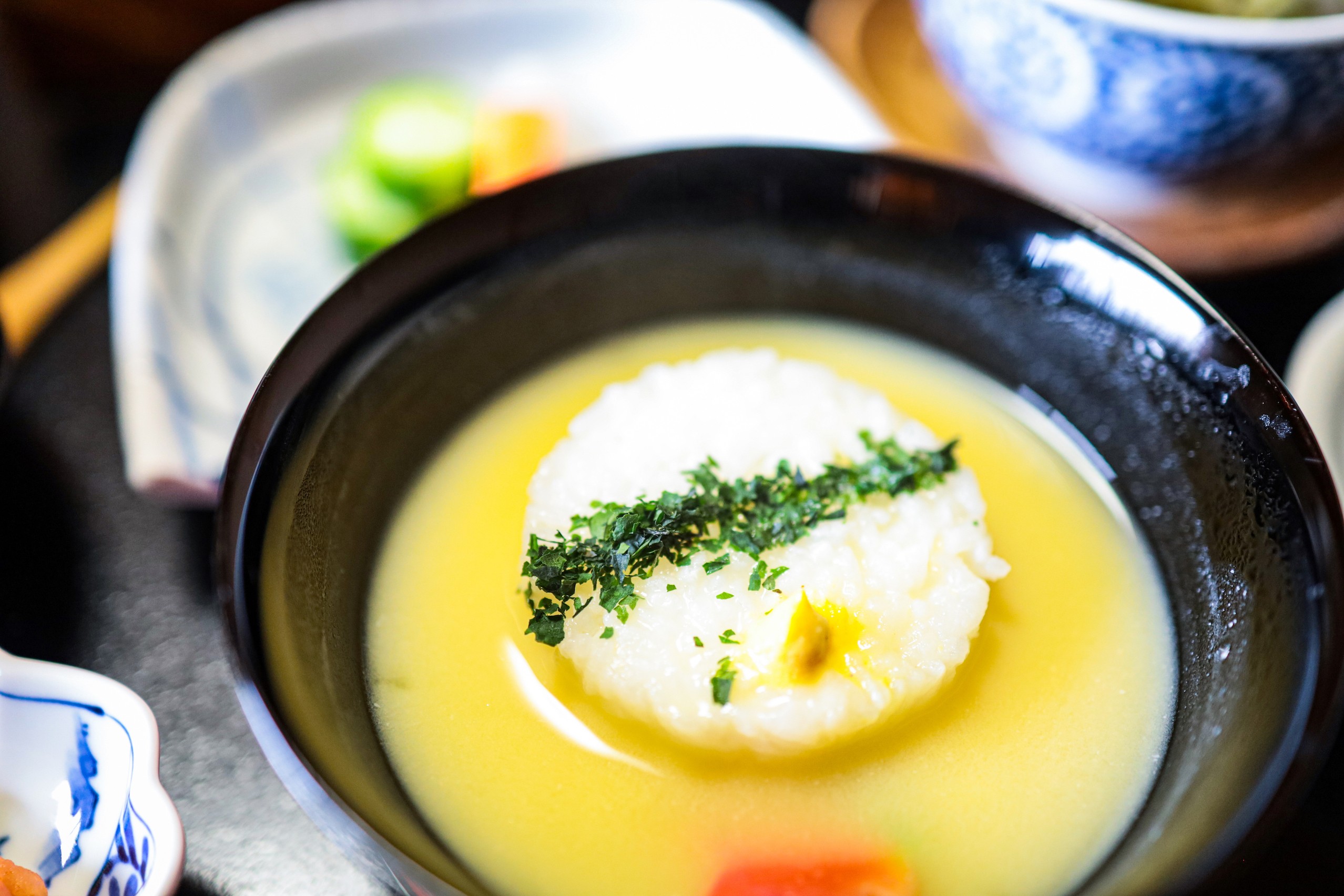
It’s the ultimate banquet in which some of Uji’s highest quality green tea appears. Tencha (Ground tea leaves that are made into matcha) can be used not only as a rice topping, but in a wide variety of ways. Next time we’re cooking we’ll have to search up some recipes that use Tencha as an ingredient!
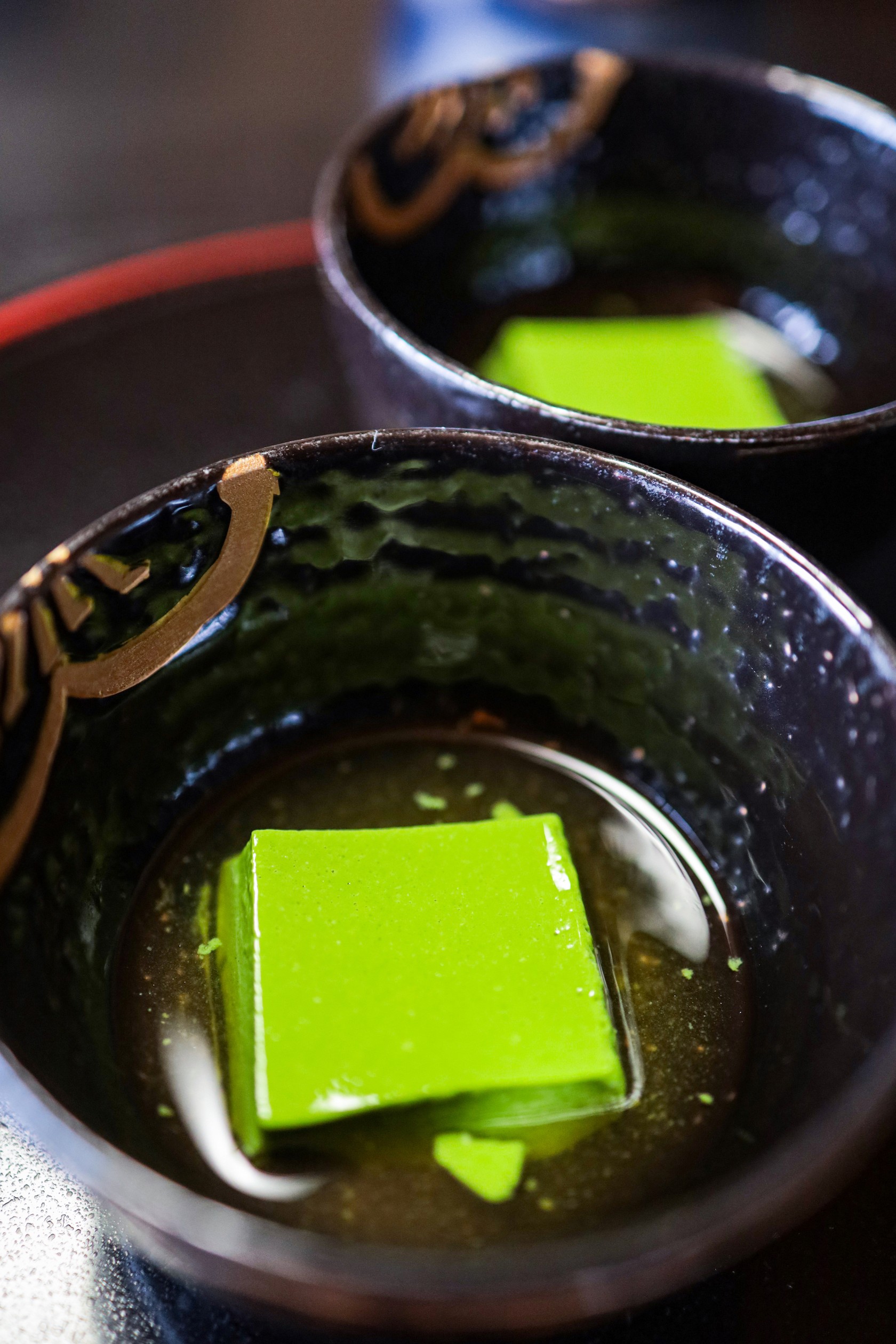
The matcha tofu uses a luxurious 2 servings of matcha! Make sure to try it!!
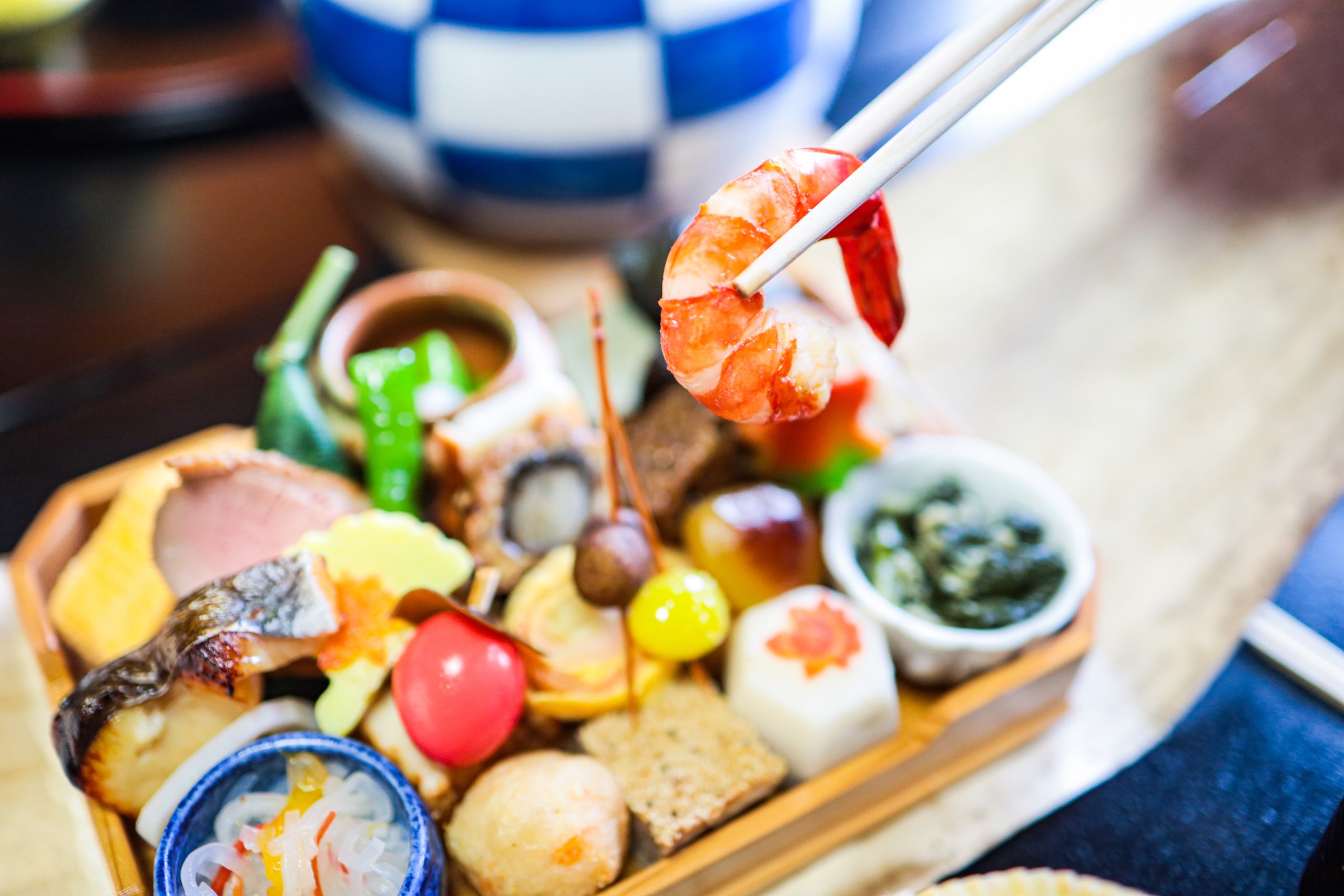
This bento box contains over 25 unique seasonal ingredients and flavors. It’s as if you're tasting each and every seasonal food that Japan has to offer one after another.
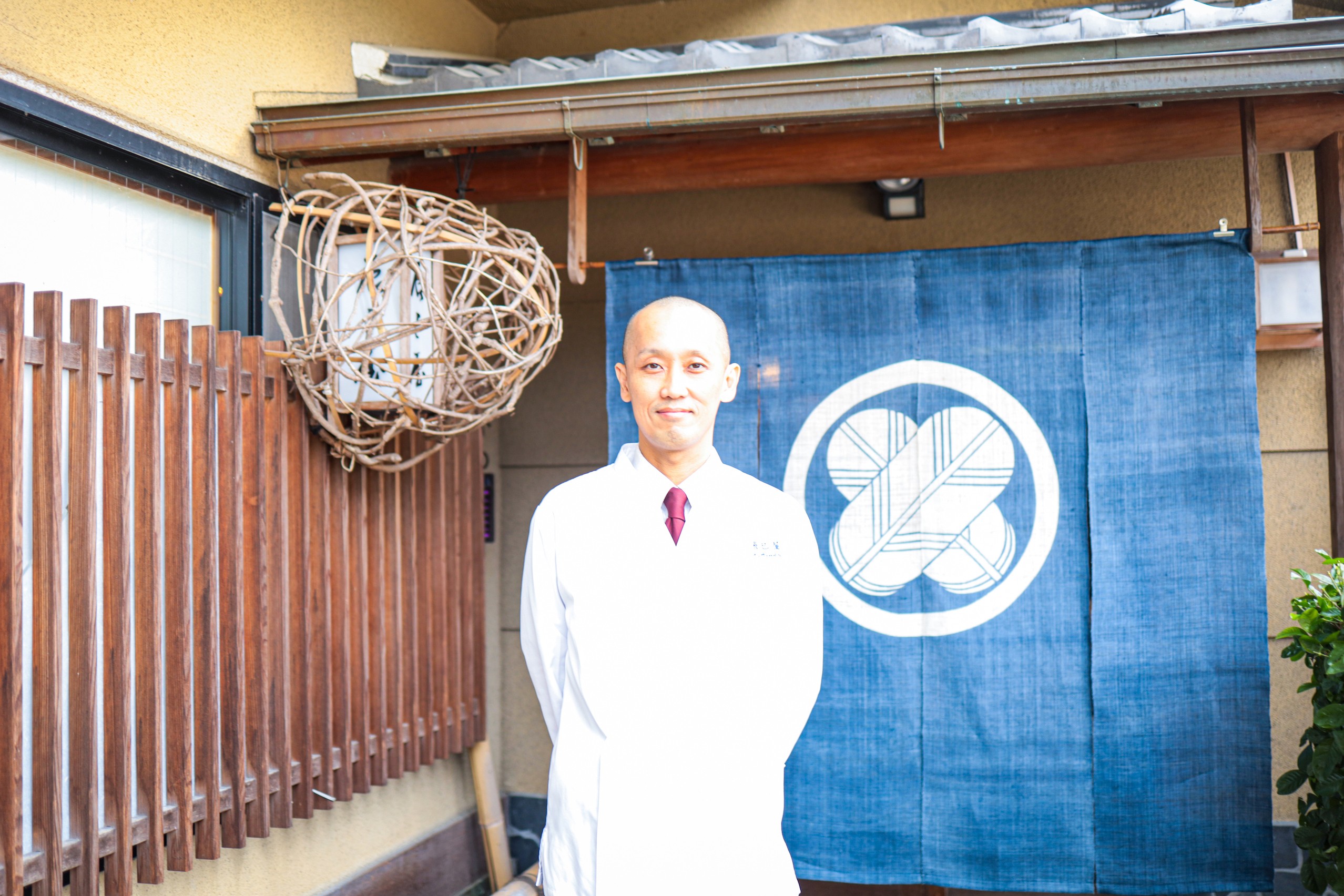
A quote from the 8th owner of the store, Soichiro Hidari - “Matcha is a delicate ingredient where the flavor can decrease simply through a change in temperature or humidity, it’s because of this that we use different types of matcha within our dishes.”
Tatsumiya
Address:Tōgawa-3-7 Uji, Kyoto
- Business Hours:
11:00~15:30 [Last Order 14:30]
16:30~22:00 [Last Order 19:30] (Reservation Required in the Evening) - Holidays:Irregular(multiple closures during New Year’s Period and off season in February, July, and September)
- Access:A 12-minute walk from Keihan Uji Station
Picking Some Amazing Pottery to Brew some Delicious Tea!
There are many places to see around and along the Uji River including Byodoin, Jodoin, and more. Since we’ve come all this way, it’s only right that we should get on a later train and take a trip to the ASAHIYAKI shop & gallery which we’ve been interested in visiting since we arrived after hearing so much about it.
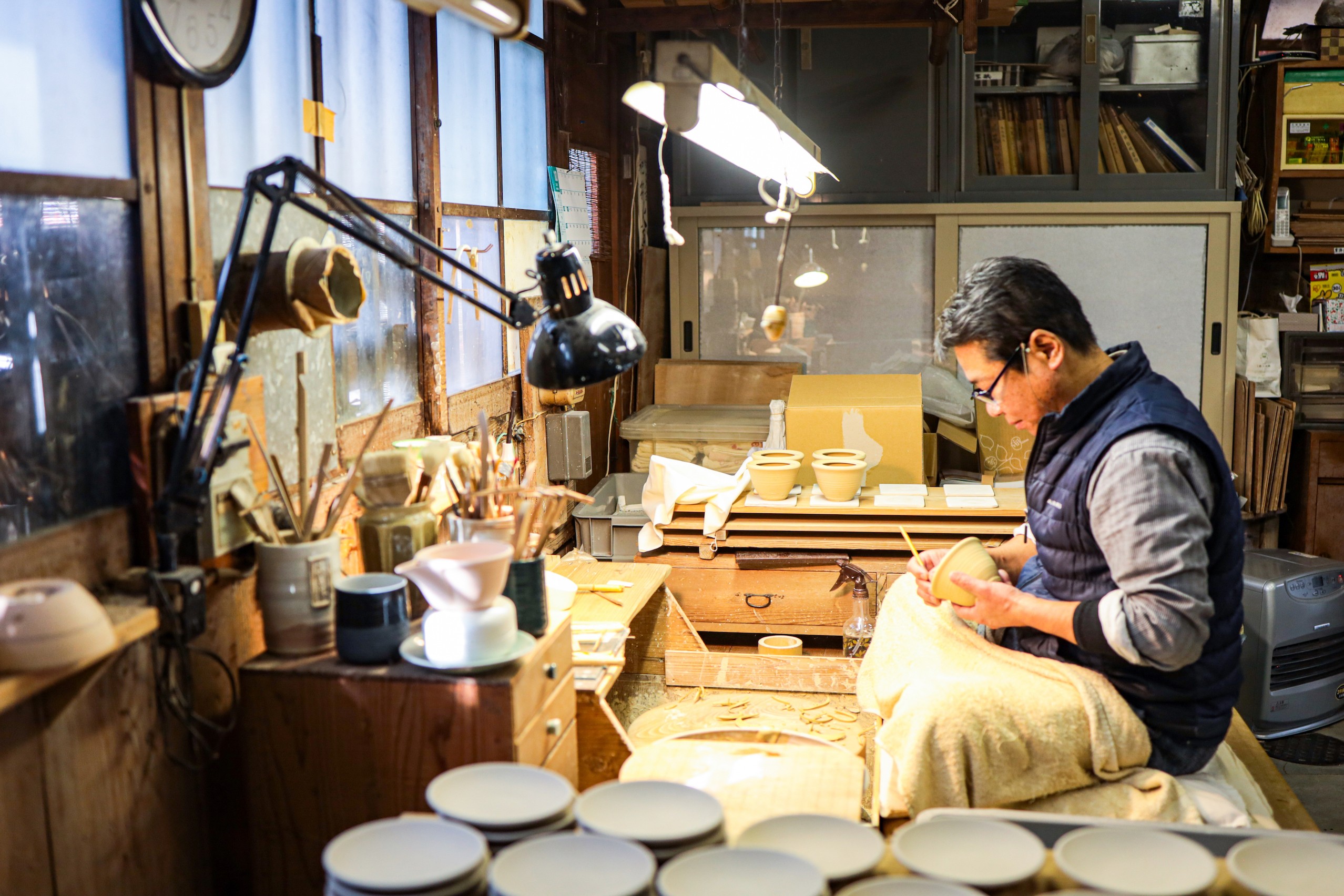
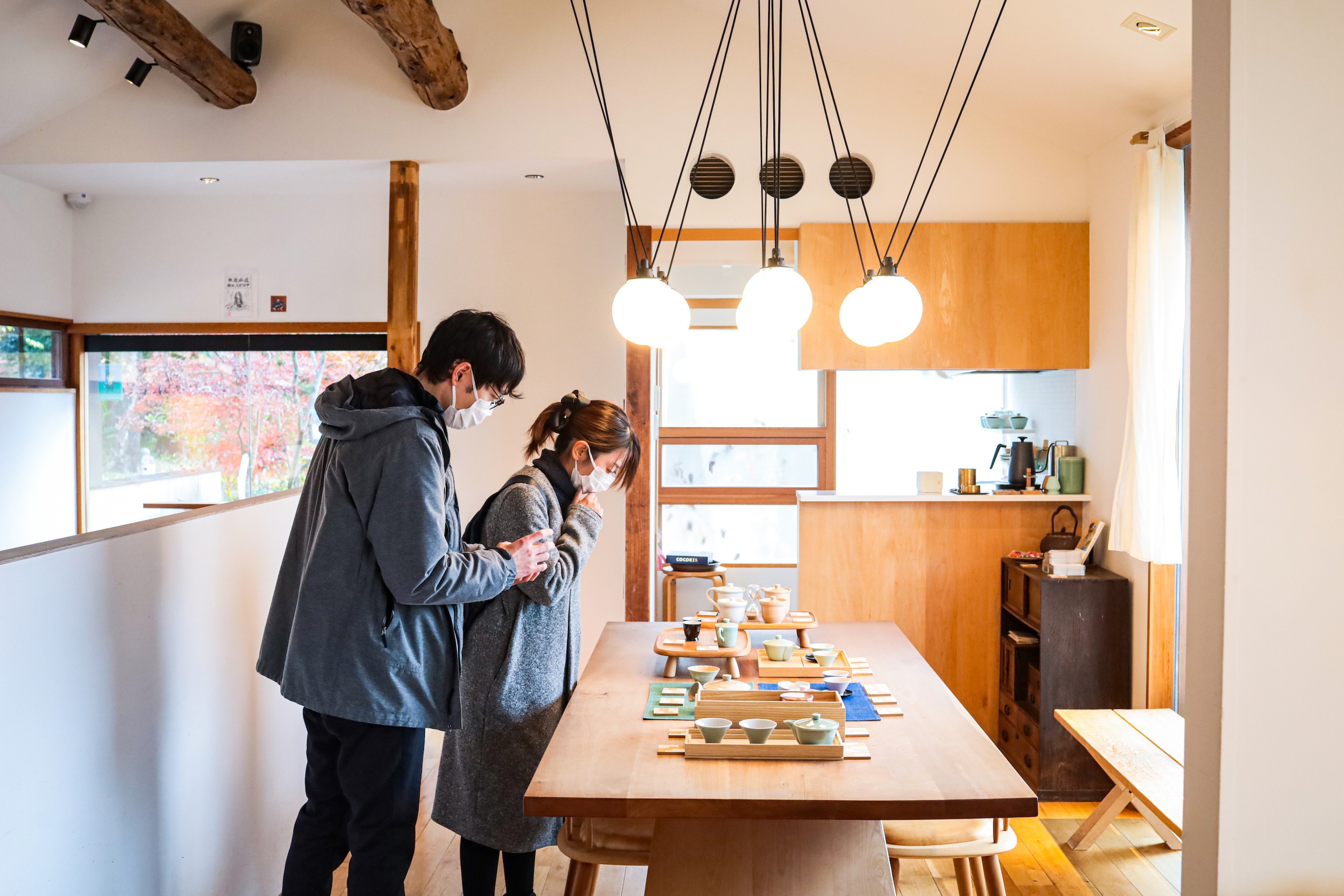
The first thing we saw were some Asahi pottery pieces, all of which are filled with the essence of Kyoto. These have been created using materials from the nearby Mt. Asahi, with their pale color being one of their most characteristic features.
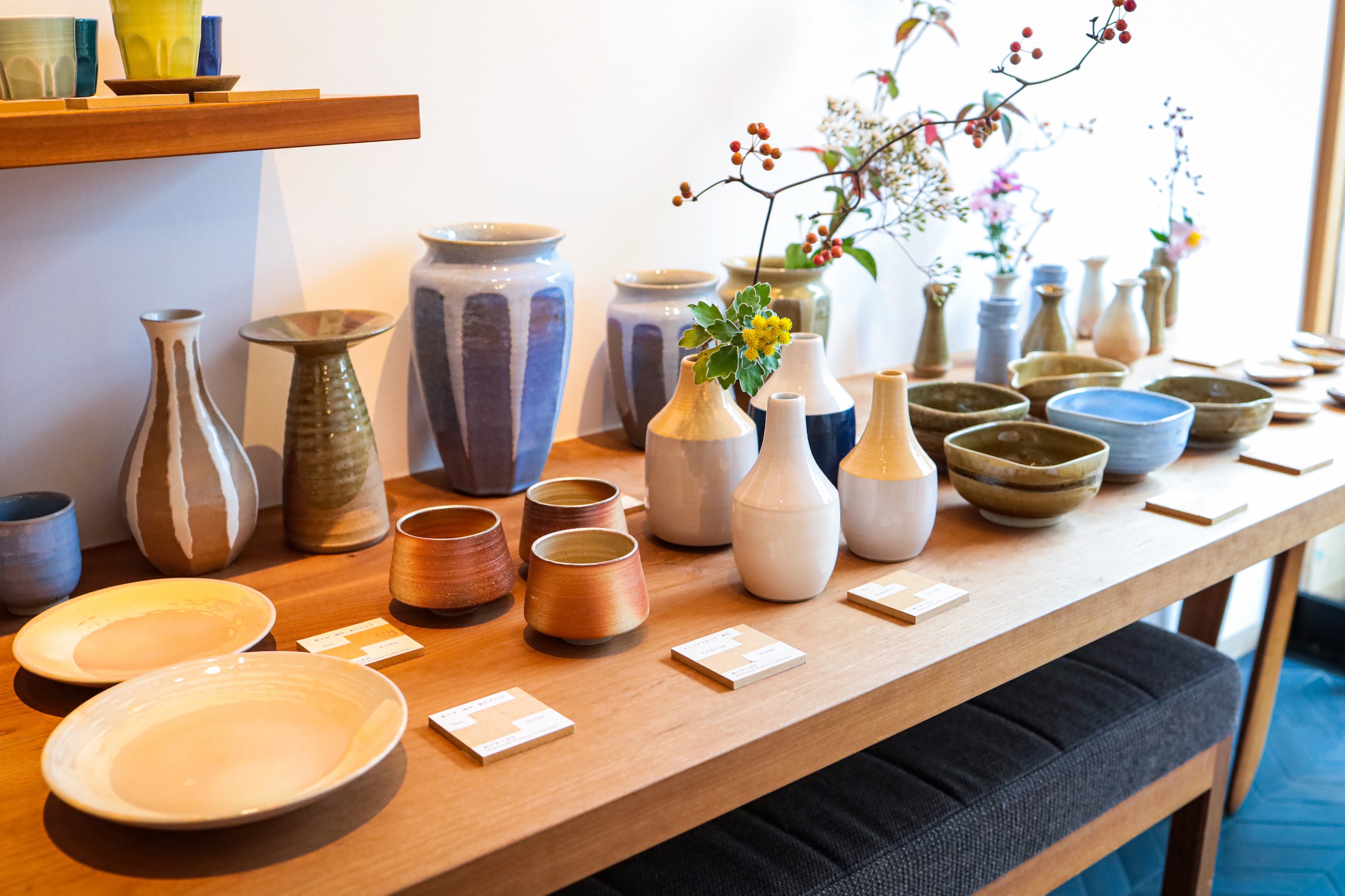
Within the lineup you’ll find various products with amazingly beautiful color gradients, all of which you’ll want to take home with you for yourself or as souvenirs. With just one of these products placed somewhere in your home you’re sure to feel their sense of aesthetic beauty, and using them to drink tea is sure to make the tea taste even more delicious!
ASAHIYAKI shop & gallery
Address:Mataburi-67 Uji Kyoto 611-0021
- Business Hours:10:00〜17:00
- Holidays:Mondays(the following day if Monday is a public holiday)/ the last Tuesday of each month, New Year’s Period(12/27〜1/4)
- Access:7-minute walk from Keihan Uji Station
A Once in a Lifetime Sight?! - The Largest Repair in Over 60 Years
While this is quite sudden, a quiz for our FUN! JAPAN membersu. Do you know how long ago it was that Japanese tea was brought to Japan?
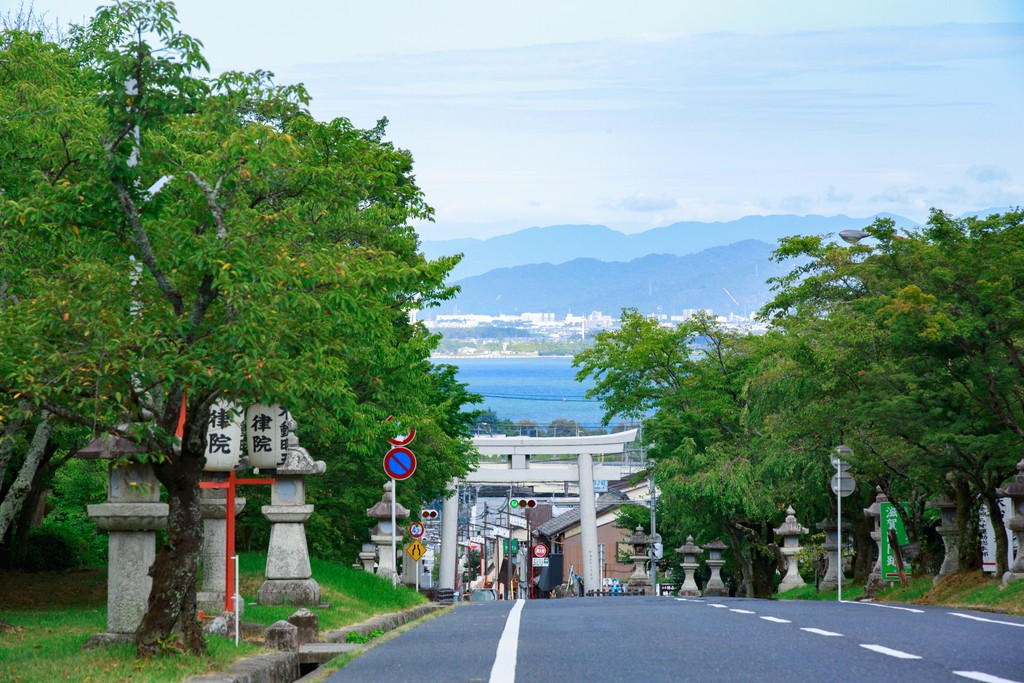
In the year 805, it is said that the Buddhist monk Saichō was on an envoy to Tang China, from which he brought back seeds for tea which he planted at the foot of Mt. Hiei in Otsu, Shiga Prefecture, this was what is said to have been the start of Japanese tea. It is written in history books that in 815, at the start of the Heian period (794-1185) of Japan, Sencha (medium grade green tea) was offered as a gift to Emperor Saga when he visited Ōmi Province (now Otsu), which means Otsu in Shiga Prefecture also has deep ties and relations to Japanese tea.
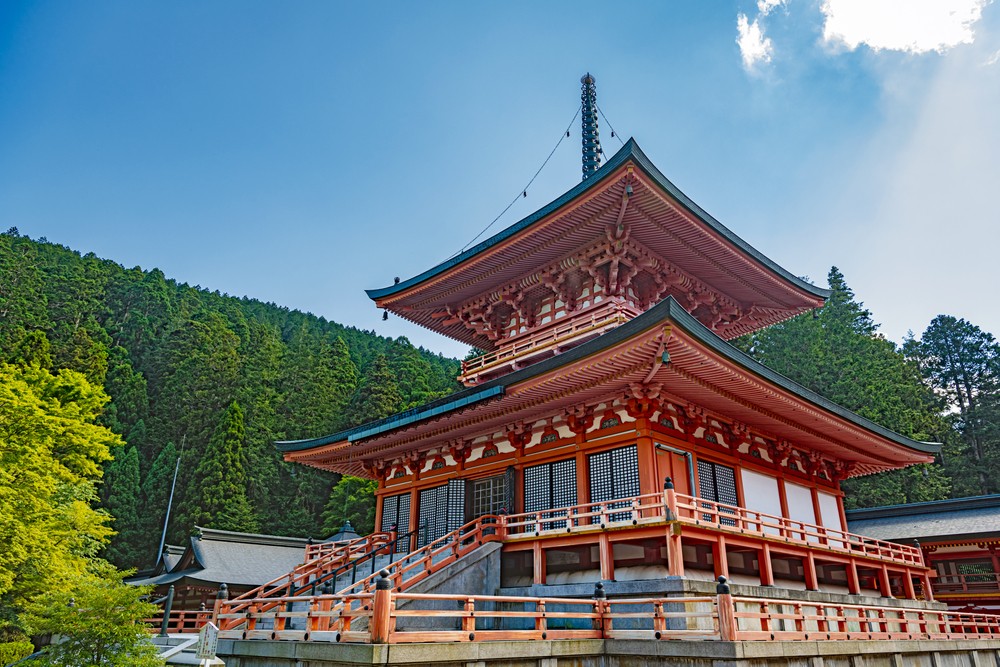
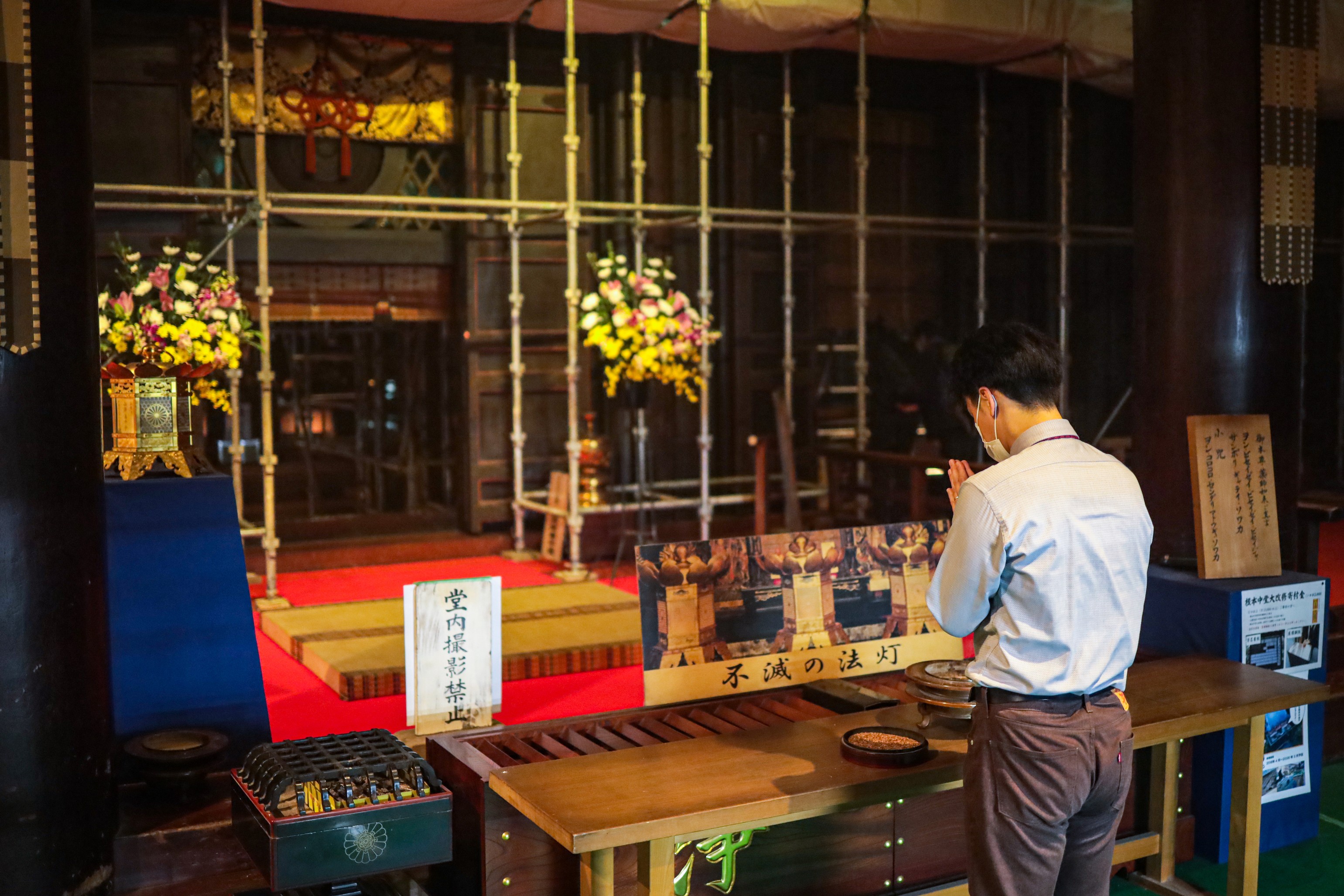
Which means we had no choice but to head to Saga Prefecture!
The first place we visited was the World Cultural Heritage Site Enryakuji Temple that is situated between Saga and Kyoto on Mount Hiei. At the start of the Heian Period, through the missionary work of the Buddhist Saichō, this head temple of the Tendai sect of Buddhism was opened.
Within you will find the birthplace of the Enryakuji Temple Konponchu-do Hall as well as 10 national treasures, over 50 Important Cultural Properties of Japan. Furthermore, the mountain is often referred to as "the roots of Japanese Buddhism" due to well respected Buddhist priests originating from the mountain.
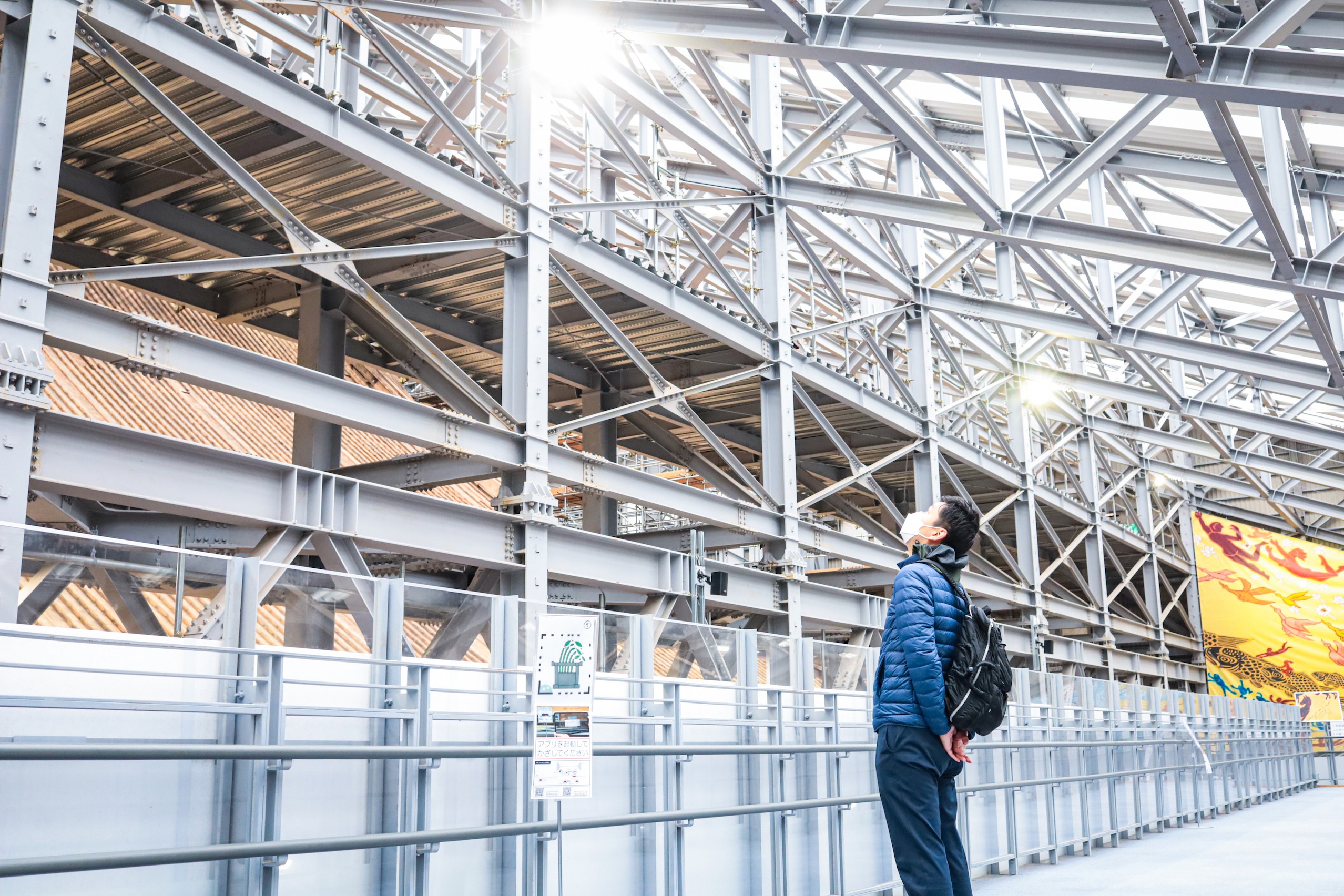
Enryakuji Temple is split into 3 main areas, the East tower, West tower, and Yokawa, with the Otsu side having a cable car at the base of the mountain which you can use to reach the eastern tower and the national treasure Konponchu-do Hall (chu-do refers to the central Buddhist temple), which is the main hall within Enryakuji Temple.
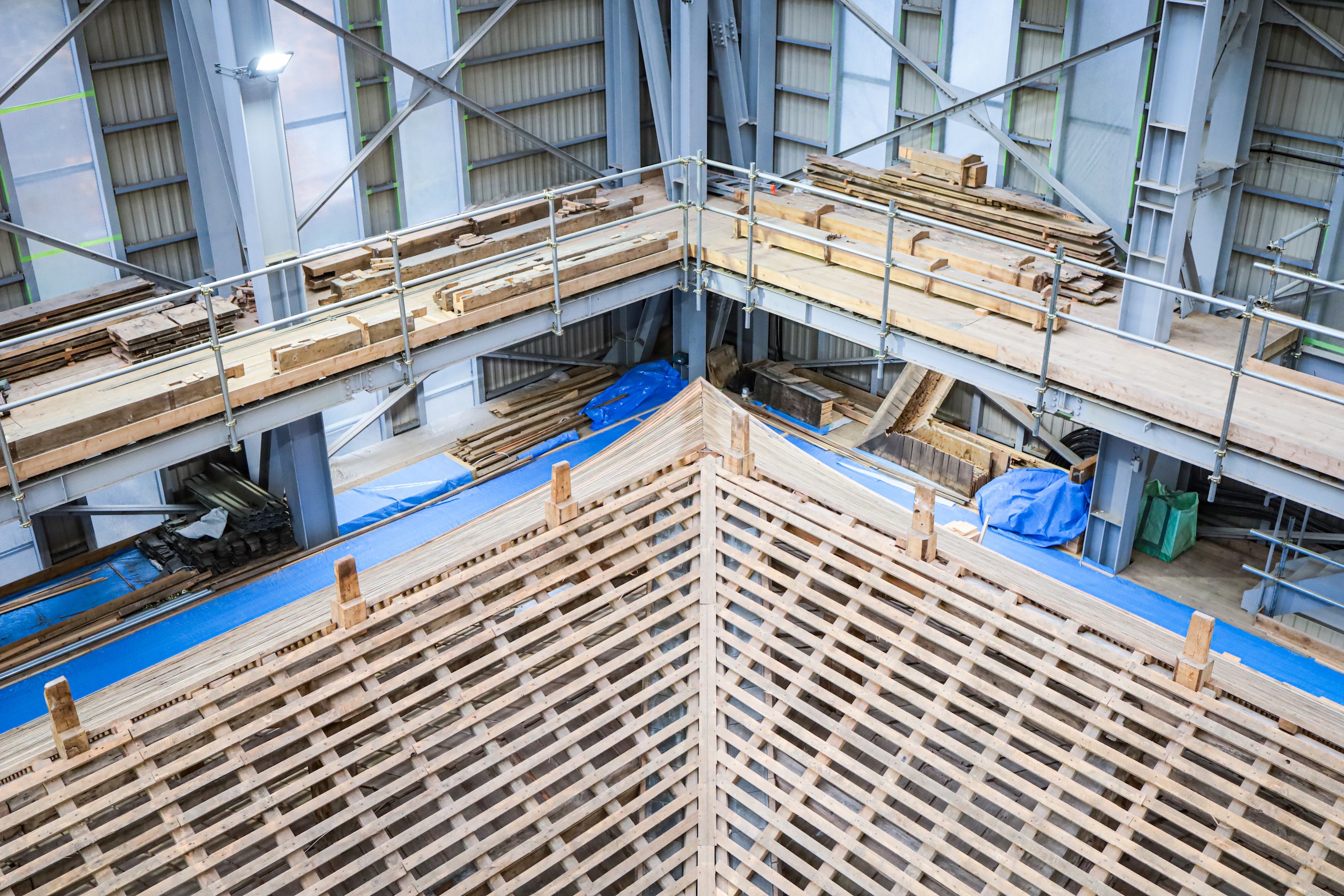
After the Ichijoshikan-in Temple was built in the year 788 by the teacher and great Buddhist Saichō during his missionary work, the current Konponchu-do Hall is what remains of it today. The temple has seen its fair share of fires, being rebuilt on a larger scale each and every time, the current temple was rebuilt and repaired in 1642 during the third-generation shogun of the Edo shogunate.. The building itself is recognized as a national treasure, with the hallways being recognized as an Important Cultural Properties of Japan.
While most statues of Buddha found within temples can only be seen from the ground, the one in the main hall here is actually built so you’re able to stand at the same height and look into the eyes of the statue.
Currently, the main hall is under a 10-year renewal process. It’s planned to continue until 2026, allowing you to see both the building’s pillars and roof up close. It’s a once in a lifetime opportunity!
Hieizan Enryakuji Temple
Address:4220 Sakamotohonmachi, Otsu, Shiga
- Worship Times:
East Tower
Mar~Nov 08:30~16:30
Dec 09:00~16:00
Jan~Feb 09:00~16:30 - West Tower / Yokawa
Mar~Nov 09:00~16:00
Dec 09:30~15:30
Jan~Feb 09:30~16:00
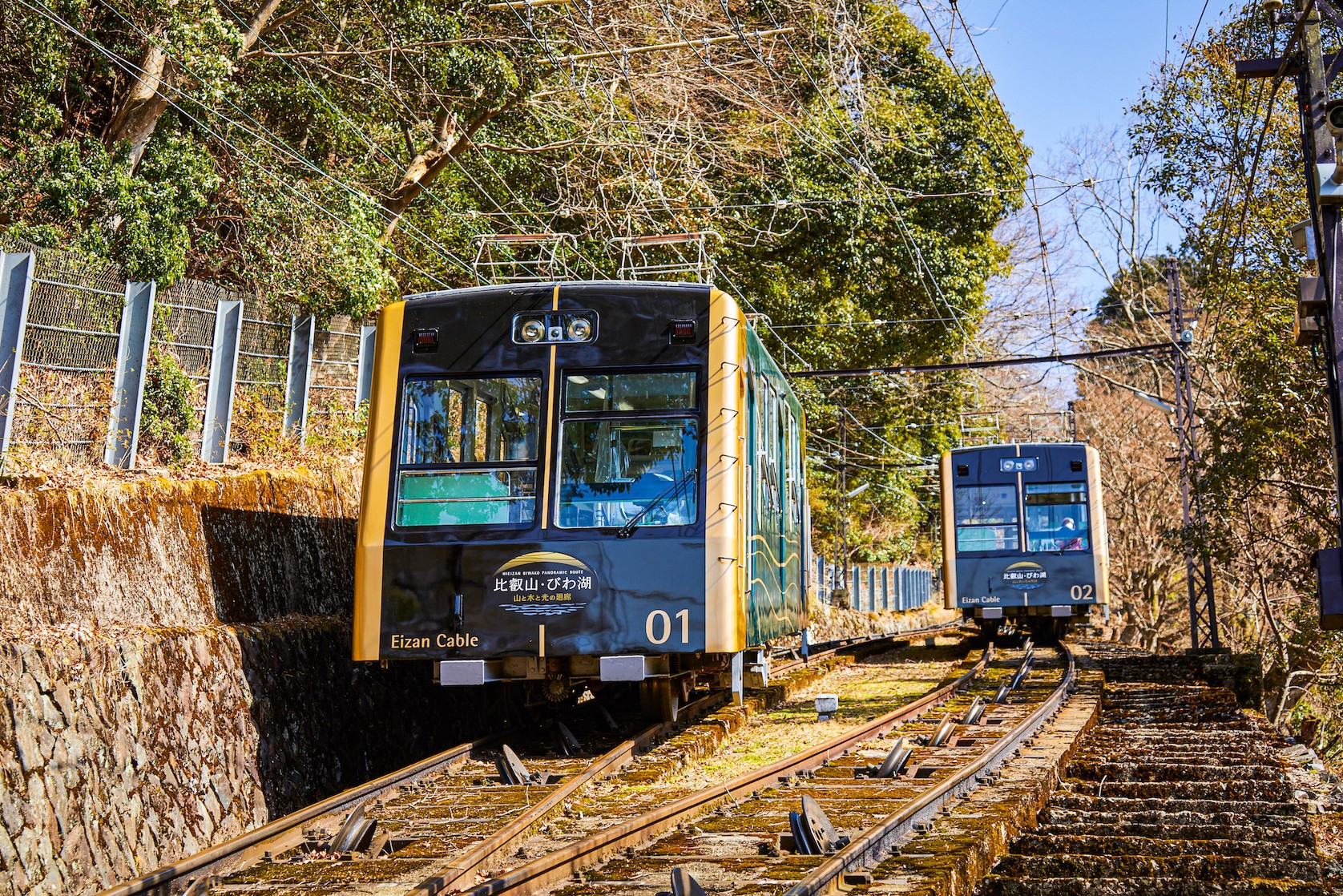
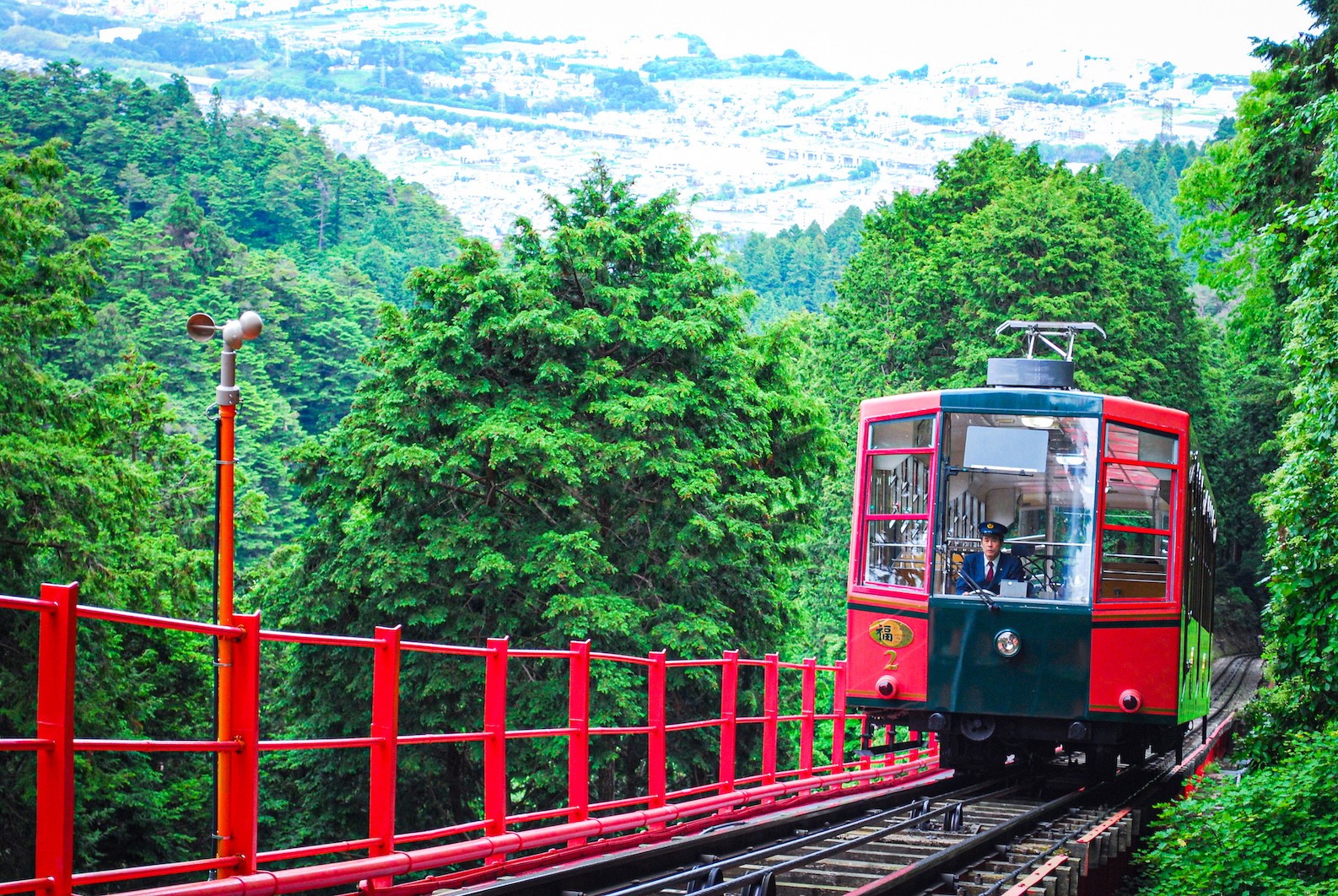
While there are many ways to climb Mount Hiei, we recommend 2 routes depending on if you’re coming from the Kyoto side or the Otsu side. Either side comes with its own share of beautiful sights, and there are many different types of transport to choose from.
On the Kyoto side you’ll find the Eizan Railway, Eizan Cable (Top) and the Eizan Ropeway, while on the Shiga Prefecture side you’ll find the Sakamoto Cable (Bottom). The former is well known for its difference of elevation, while the latter has a total length of 2,025m and is famous as Japan’s longest cable car route. While riding the Eizan Cable you’ll be able to see Kyoto, whereas on the Sakamoto Cable you will be able to see a picturesque view of Lake Biwa!
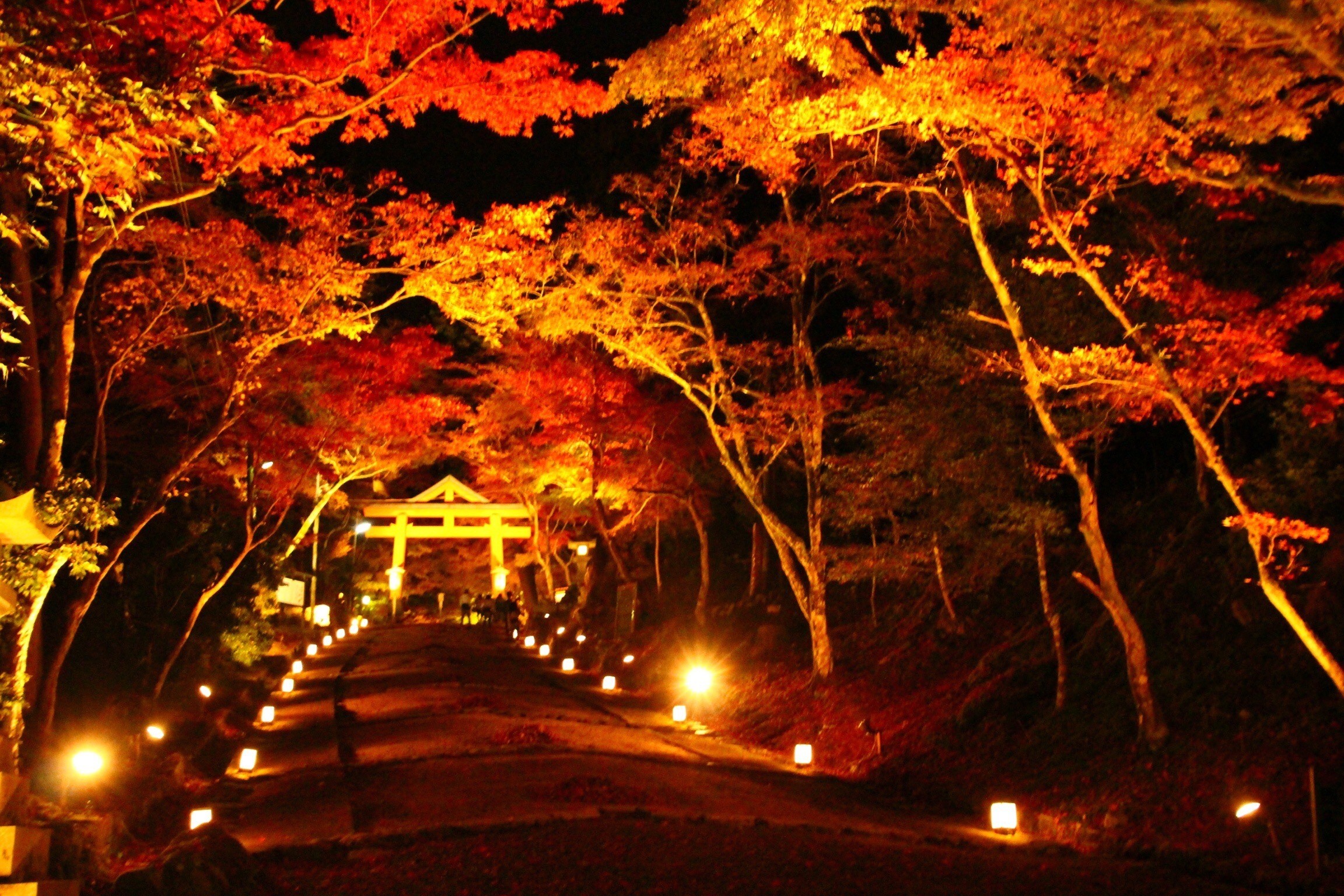
It’s time to leave Enryakuji Temple on Mount Hiei and use the Sakamoto Cable car to reach Mount Hiei’s temple town, Sakamoto. Hiyoshi-Taisha Shrine, which can be found at the foot of Mount Hiei, is said to have been built by the Buddhist Saichō around 1,200 years ago after Enryakuji Temple, it’s said to be the main shrine of Hiyoshi, Hie, and the Sannō Shrine, which is said to protect against evil, give good luck with marriage, and ensure the safety of your family. The light-up period during November and December is a must-see!
If you take a short trip to the nearby Sakamoto-hieizanguchi Station, you can visit the Hiyoshi Tea Garden which is said to have been the location where Japanese tea was planted for the first time. It’s the perfect spot to take a stroll and learn all about some amazing Japanese history!
Hiyoshi-Taisha Shrine
Address:5-chōme-1-1 Sakamoto, Otsu
- Business Hours:09:00~16:30
- Access:10-minute walk from Keihan Sakamoto-hieizanguchi Station
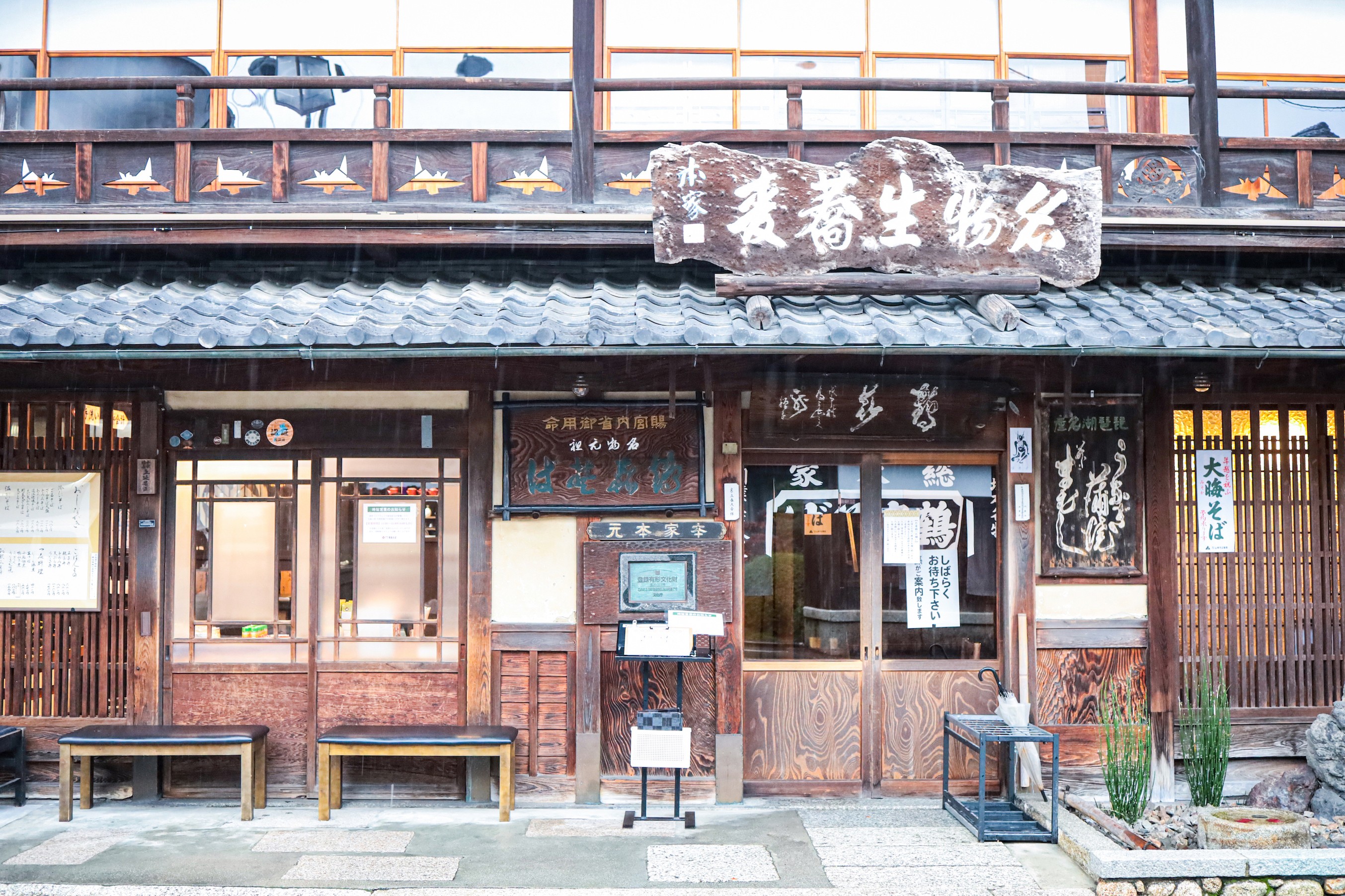
After burning a lot of calories walking, it was time we satisfied our stomachs with some tempura at Honke Tsuruki Soba, which is close to both Keihan Sakamoto-hieizanguchi Station.
The story goes that finding food atop Mount Hiei was extremely difficult, and so the first owner of Honke Tsuruki Soba, Tsuruki Kihachi used to make his way up the mountain to serve his soba dishes. Also, soba noodles are a source of nutrients for the trainee monks, often used after fasts due to the monk’s stomachs being in a weakened state after not digesting anything for long periods of time.
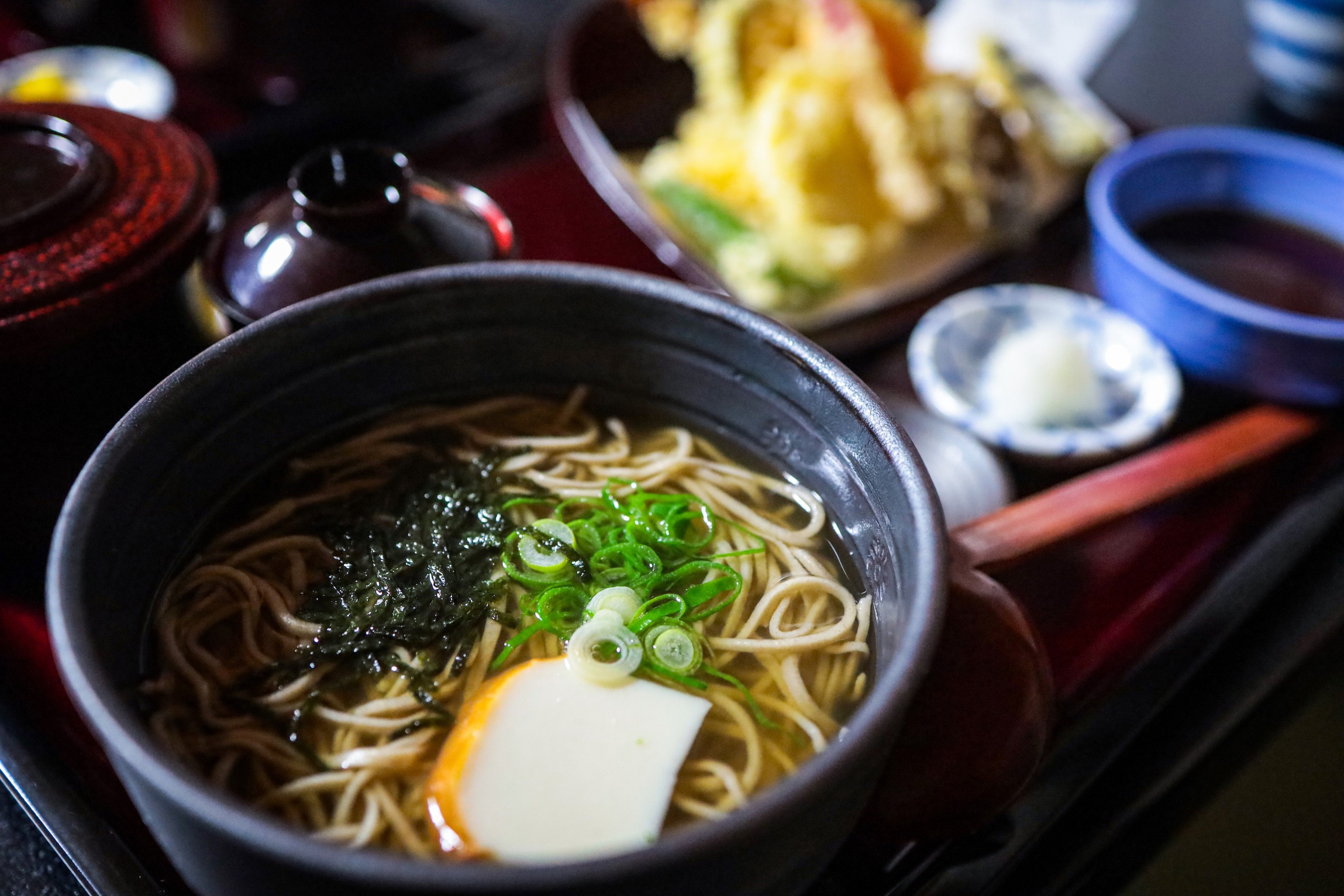
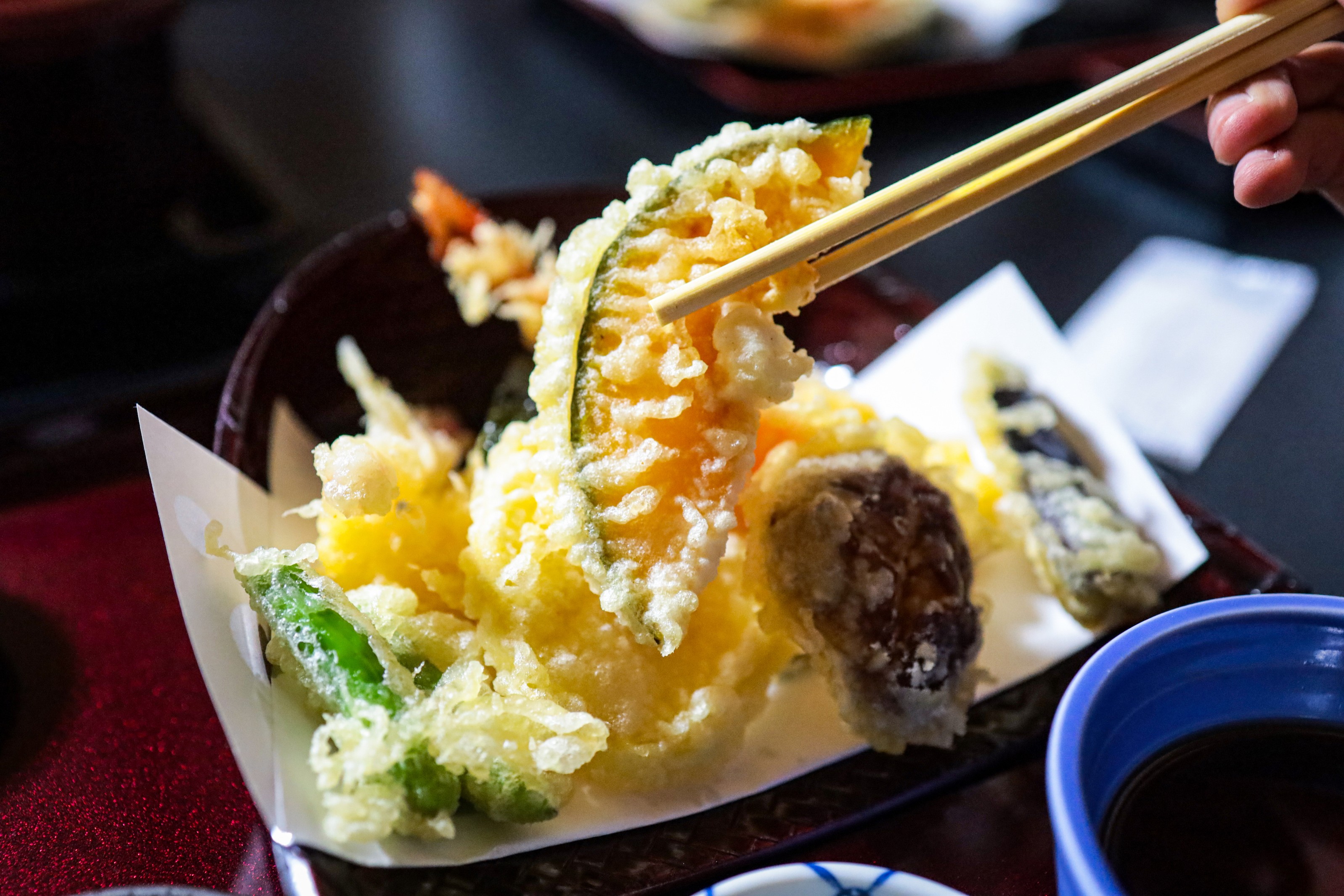
With a history of over 300 years, every single day this restaurant adjusts to the surrounding temperature and humidity, carefully selecting and regulating which buckwheat flour is being used to ensure the handmade flavor they deliver is of the highest standard. The building itself is registered as a Tangible Cultural Properties of Japan, and alongside the historic smell of the soba dishes, it left the best impression at the end of our journey!
Honke Tsuruki Soba
Address:4 Chome-11-40 Sakamoto, Otsu, Shiga
- Business Hours:11:00~16:00(L.O. 15:30)
- Holidays: Every 3rd Friday + New Year’s Day(Every 3rd Thursday + Friday during January and June, No Holidays During August + November)
- Access: 1-minute walk from Sakamoto-hieizanguchi Station
Great Value Ticket for The Keihan Main Line
There’s a special ticket especially for foreign visitors which can be used on the Keihan Main Line that connects Osaka to Kyoto. It even has some special features that allow it to include entrance fees, admission fees, and various discounts. It’s a ticket that lets the user visit not only the locations we’ve introduced here, but the many others found along the Keihan Line such as Osaka Castle, Byodoin Temple, Tofukuji Temple, Fushimi-Inari Taisha Shrine, and more!
Unfortunately, Mount Hiei is not included in the above ticket, however, every year there are various ticket sets for both Enryakuji Temple and transportation to Mount Hiei available at discounted prices.
Information on Great Value Tickets for Mount Hiei
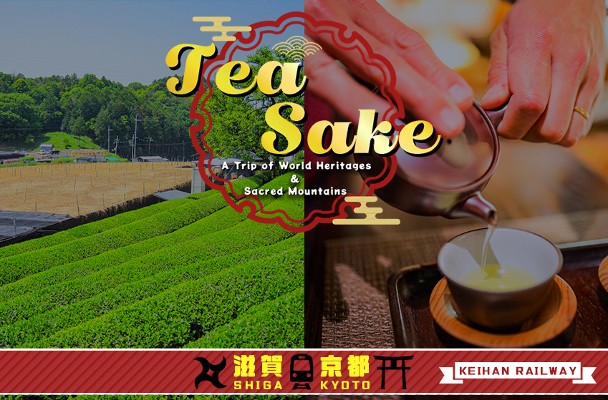

Comments